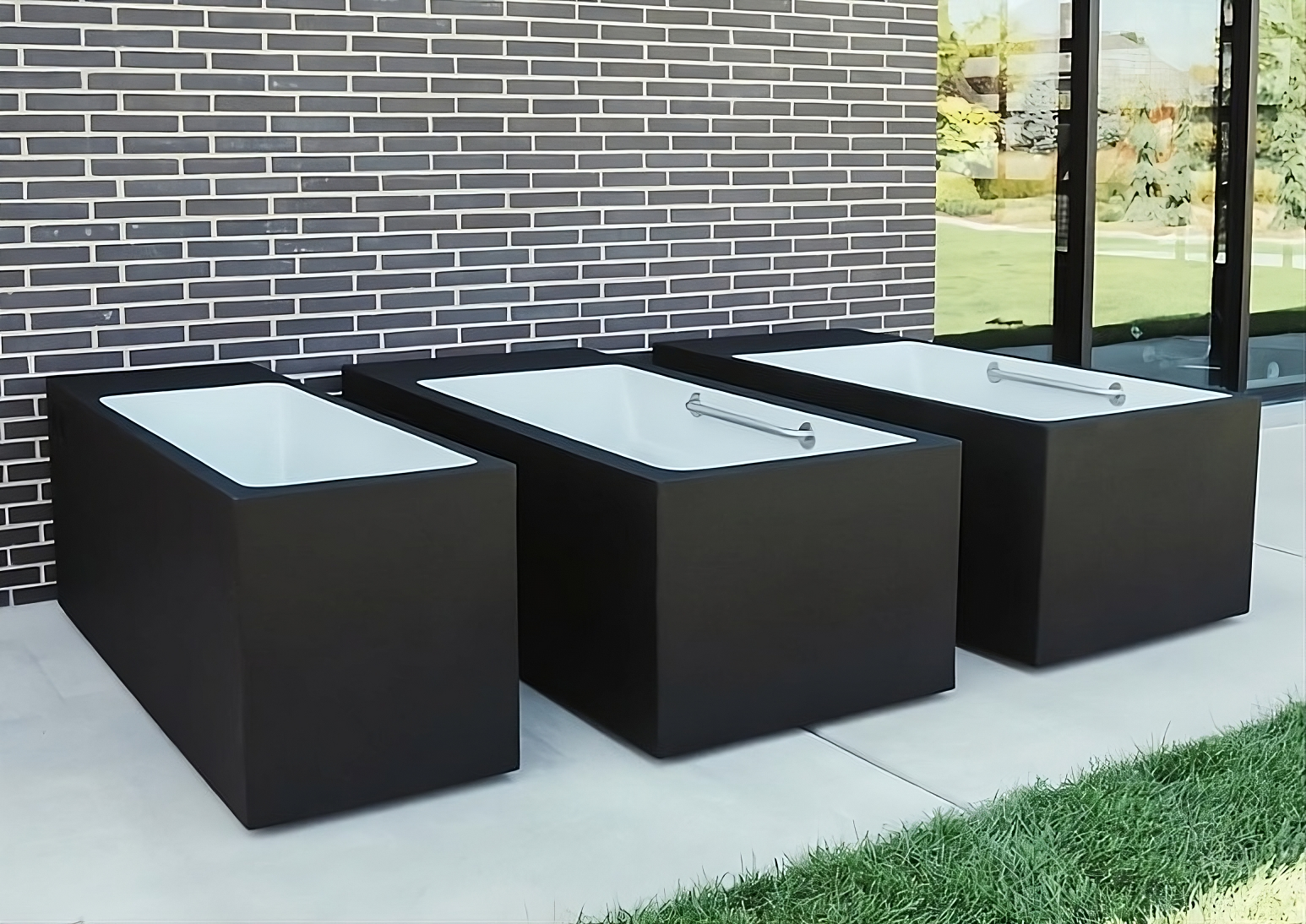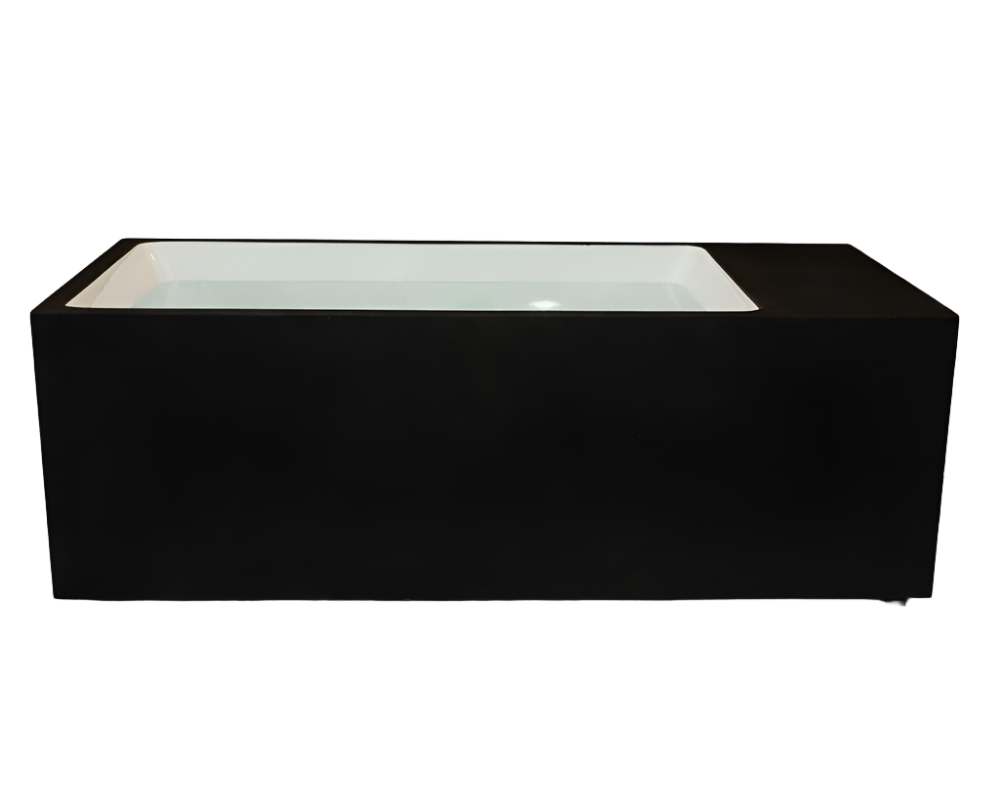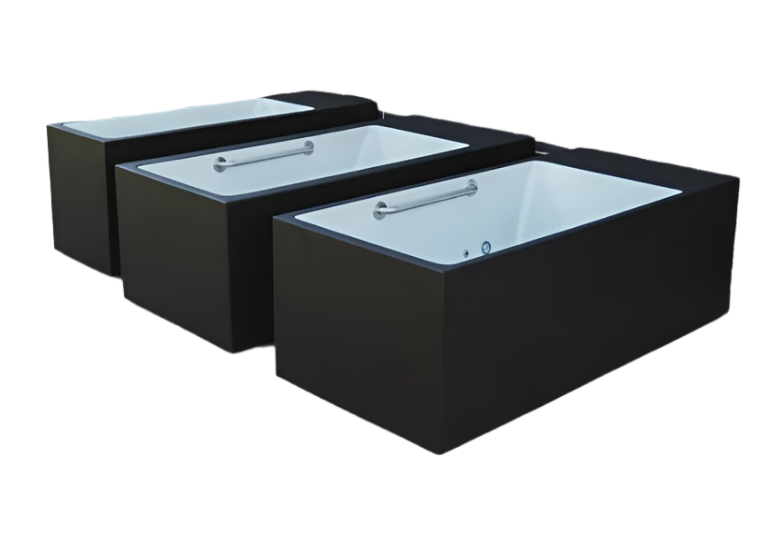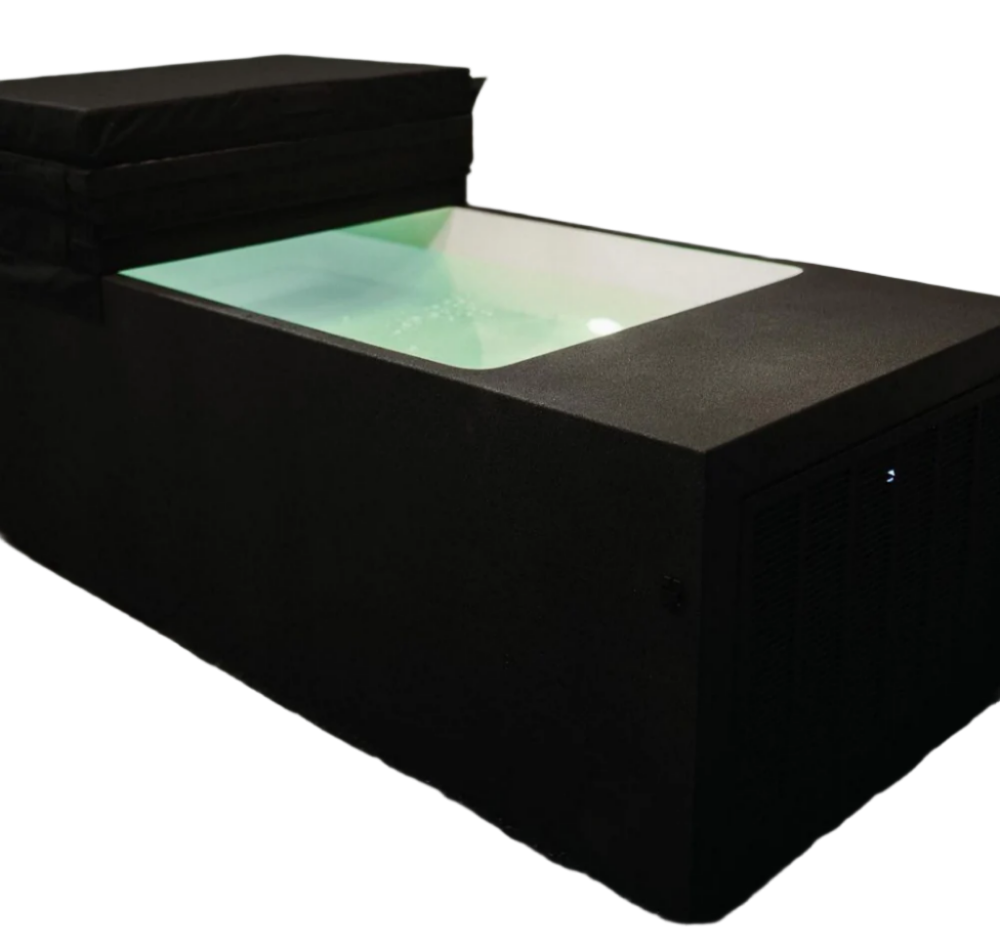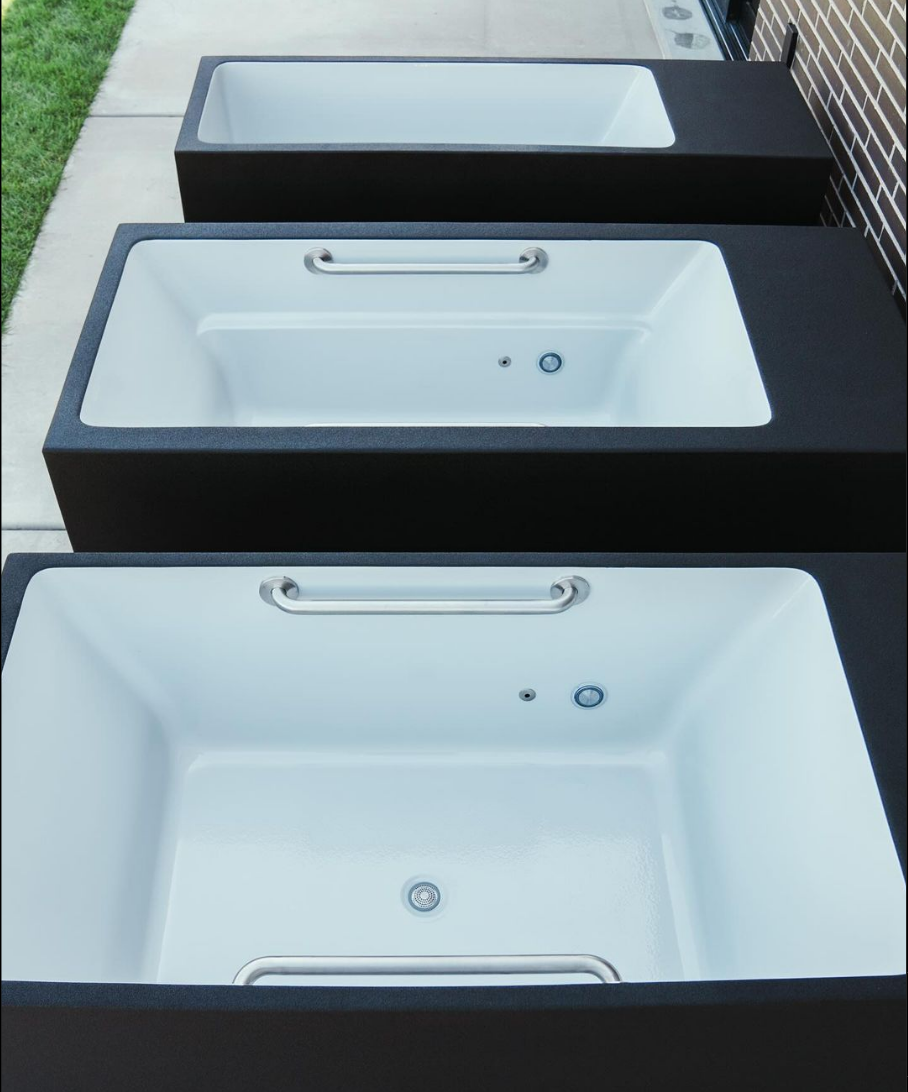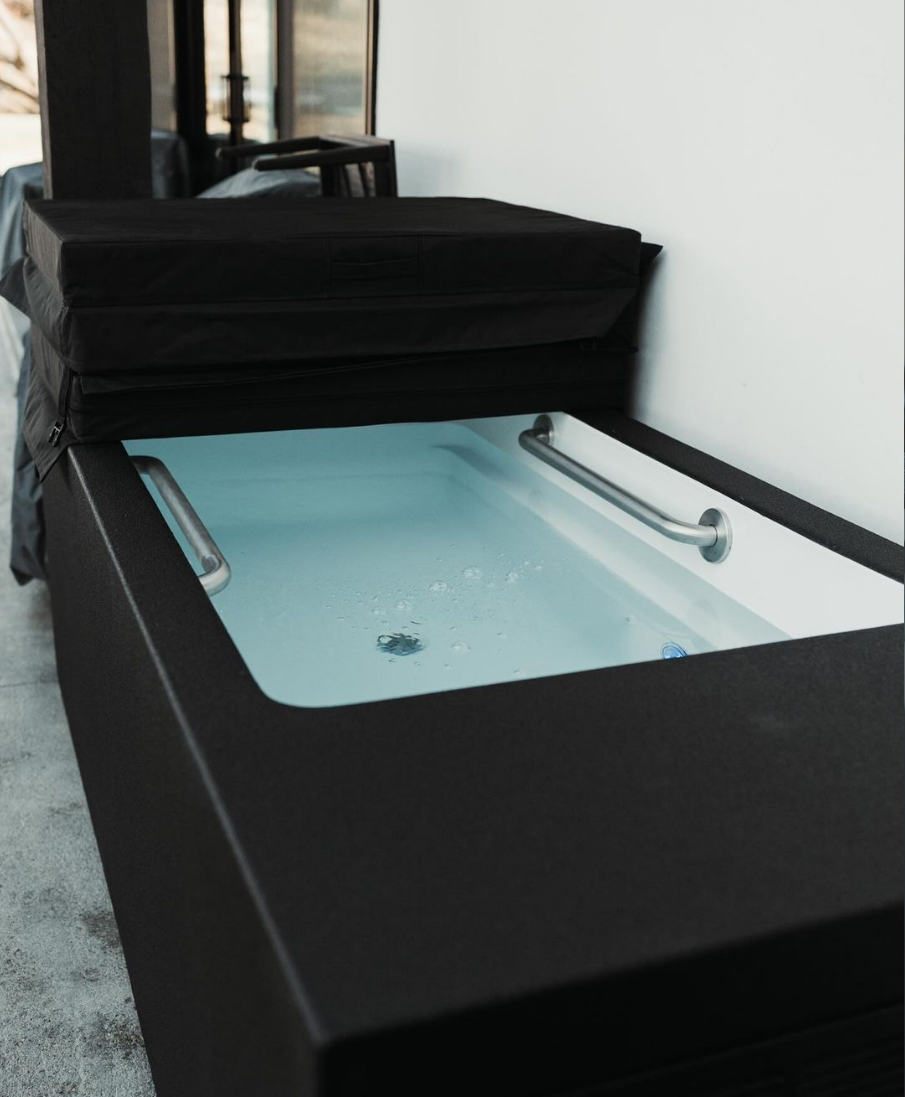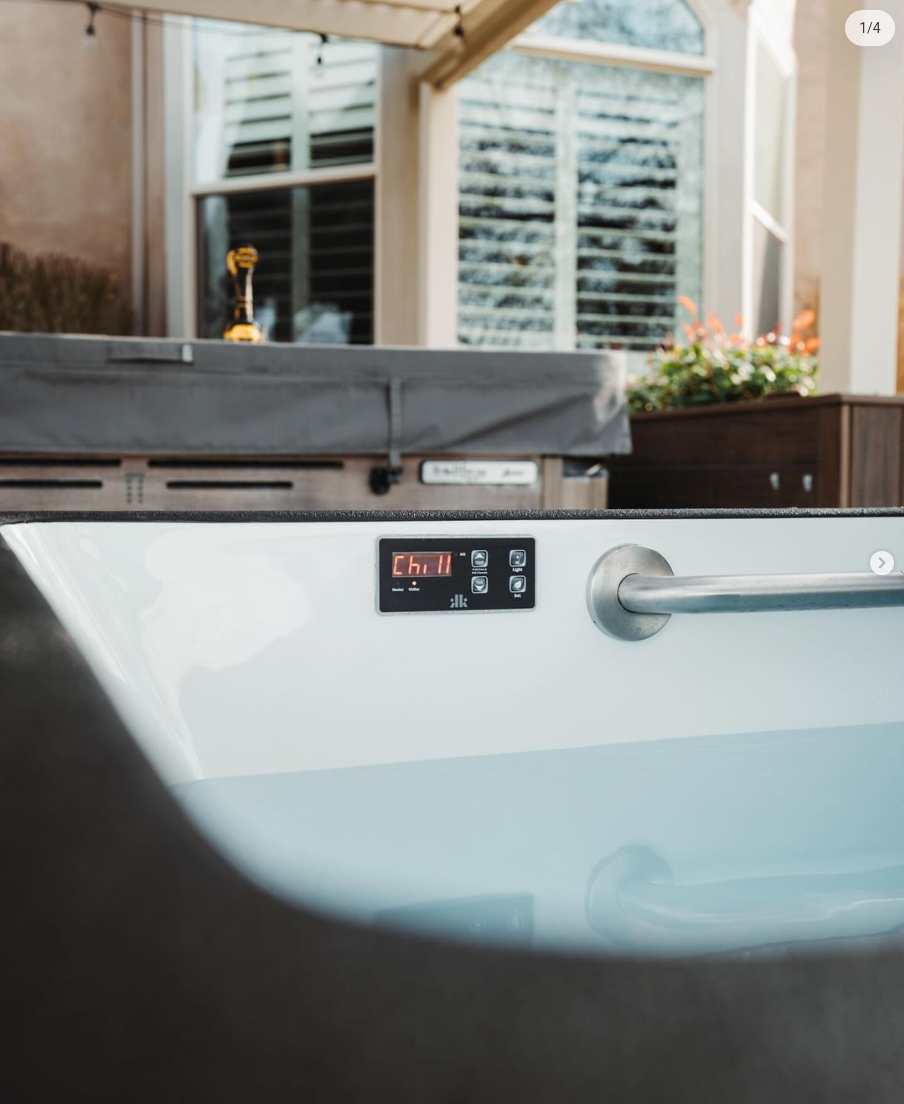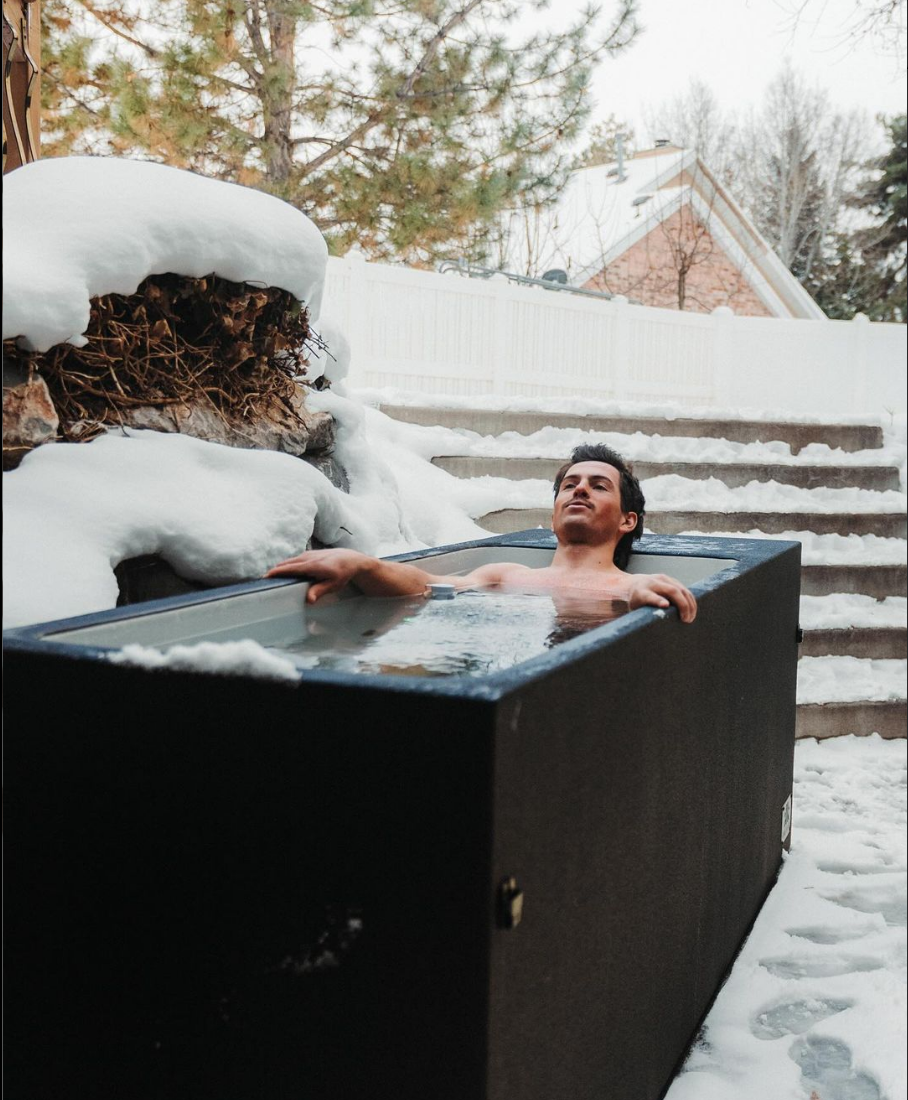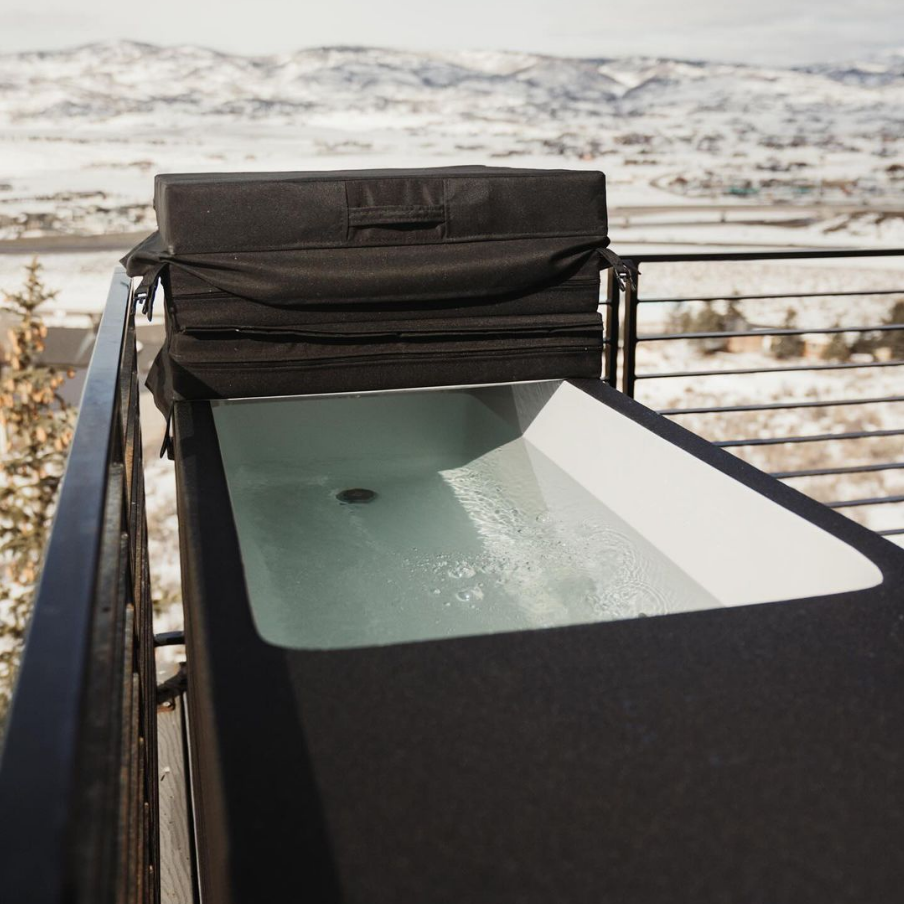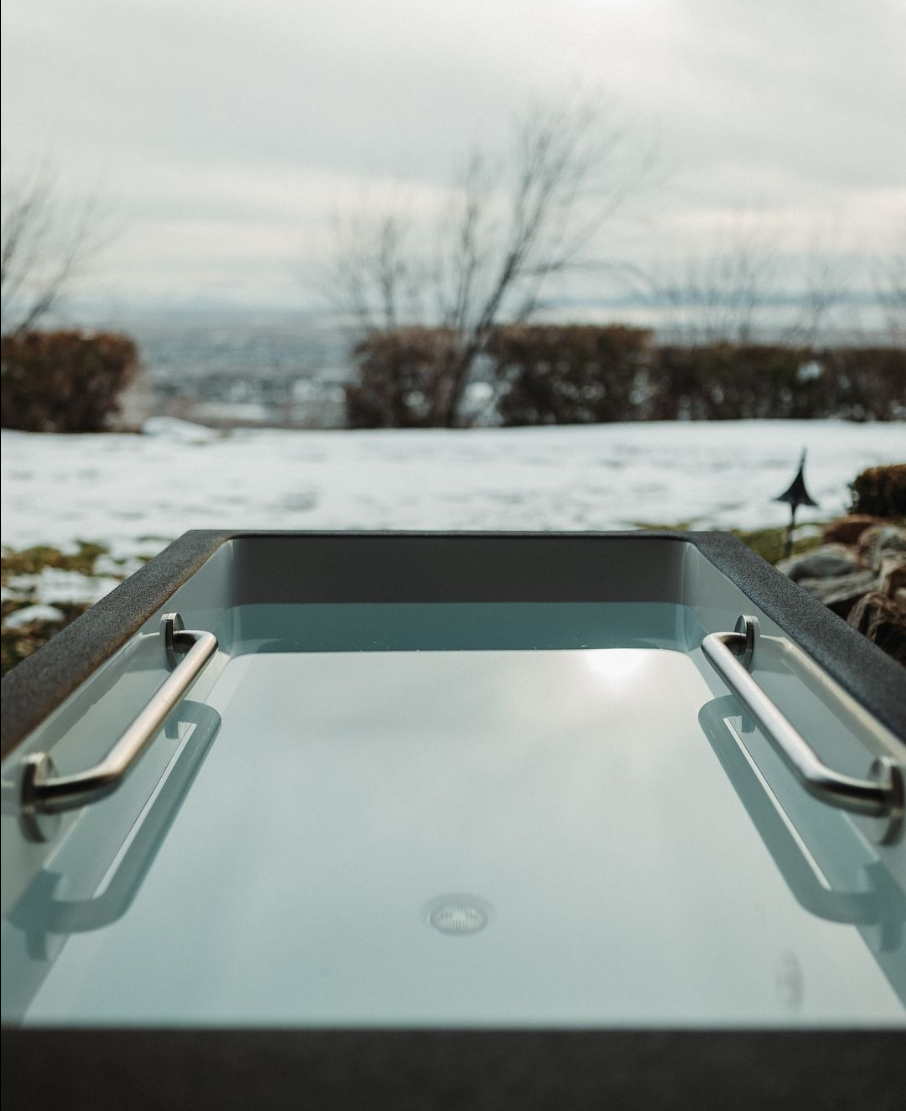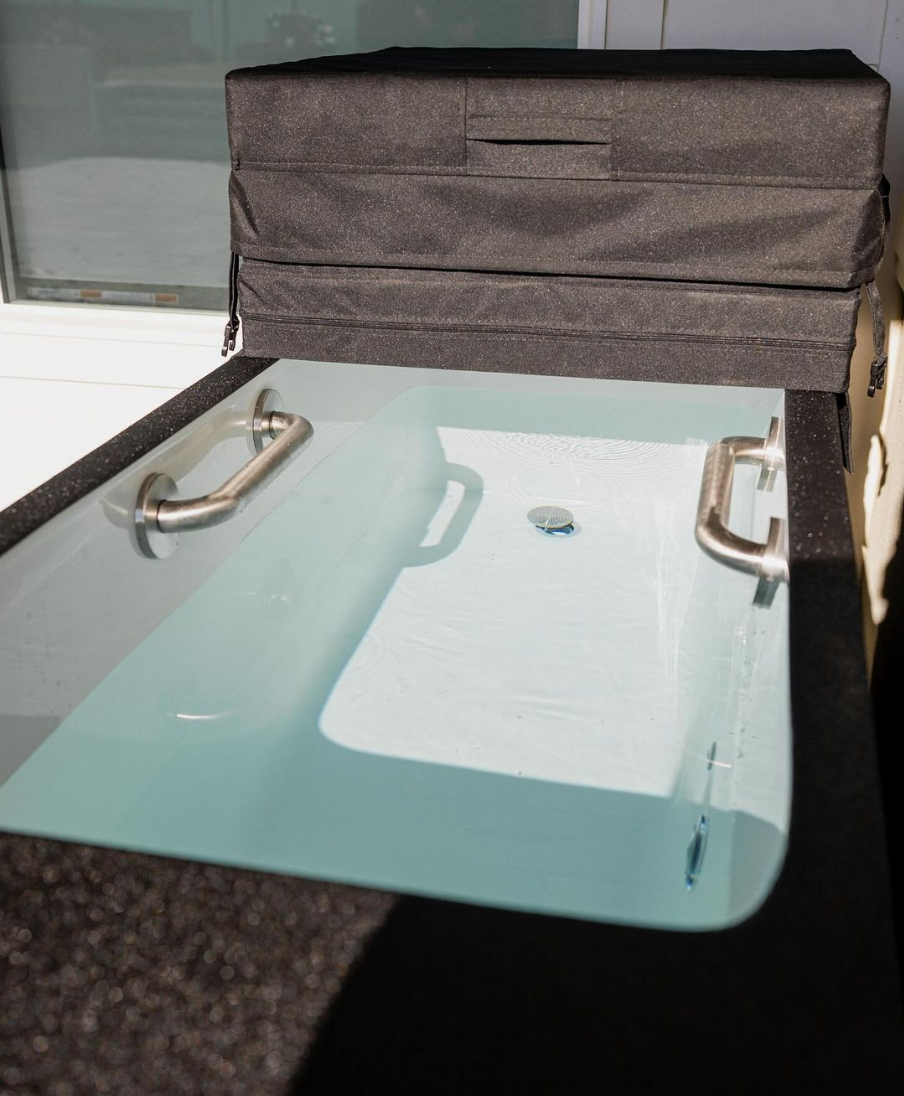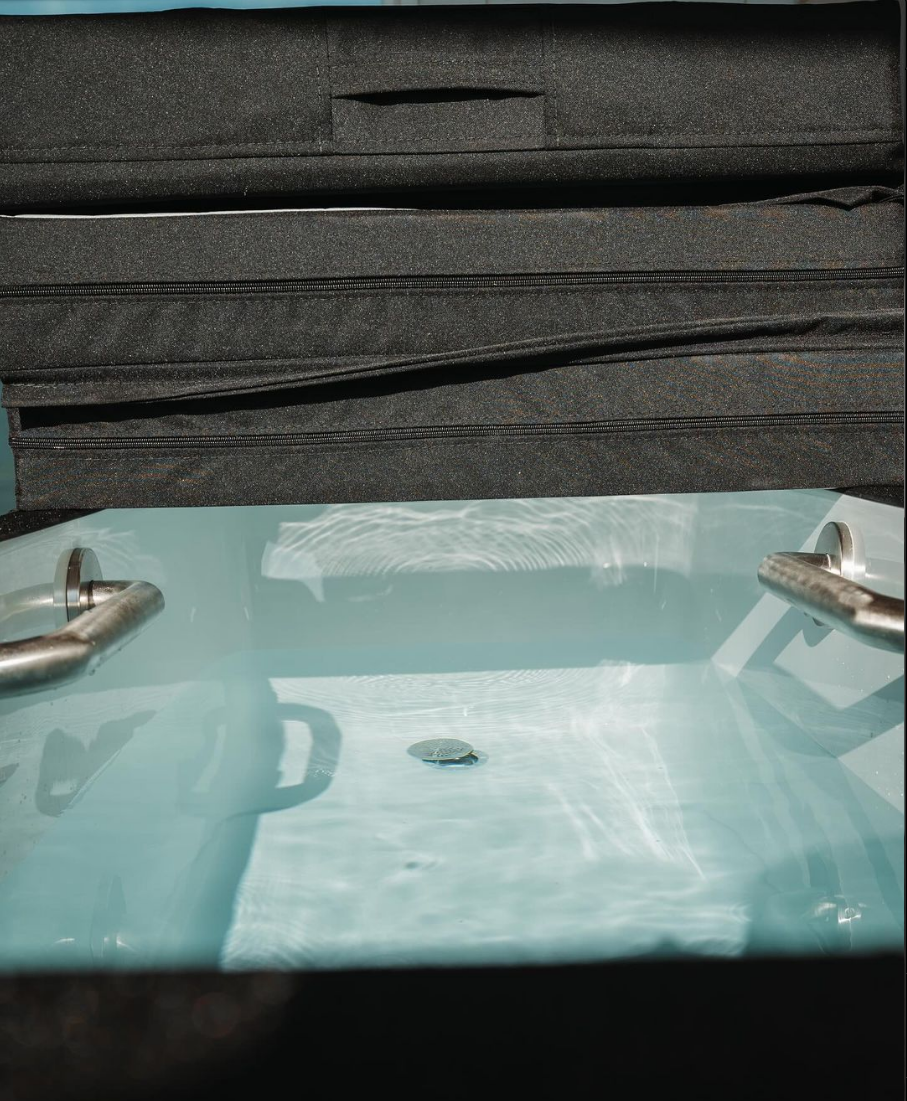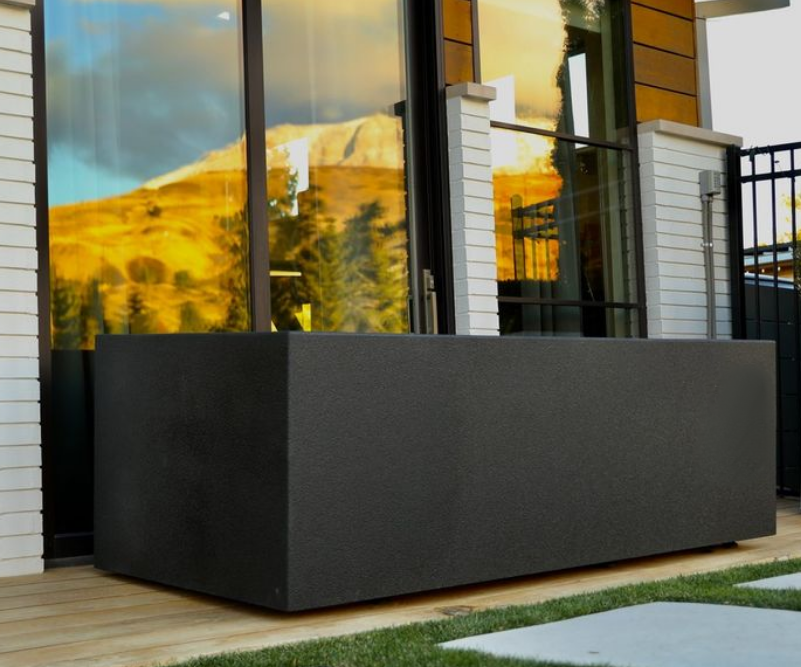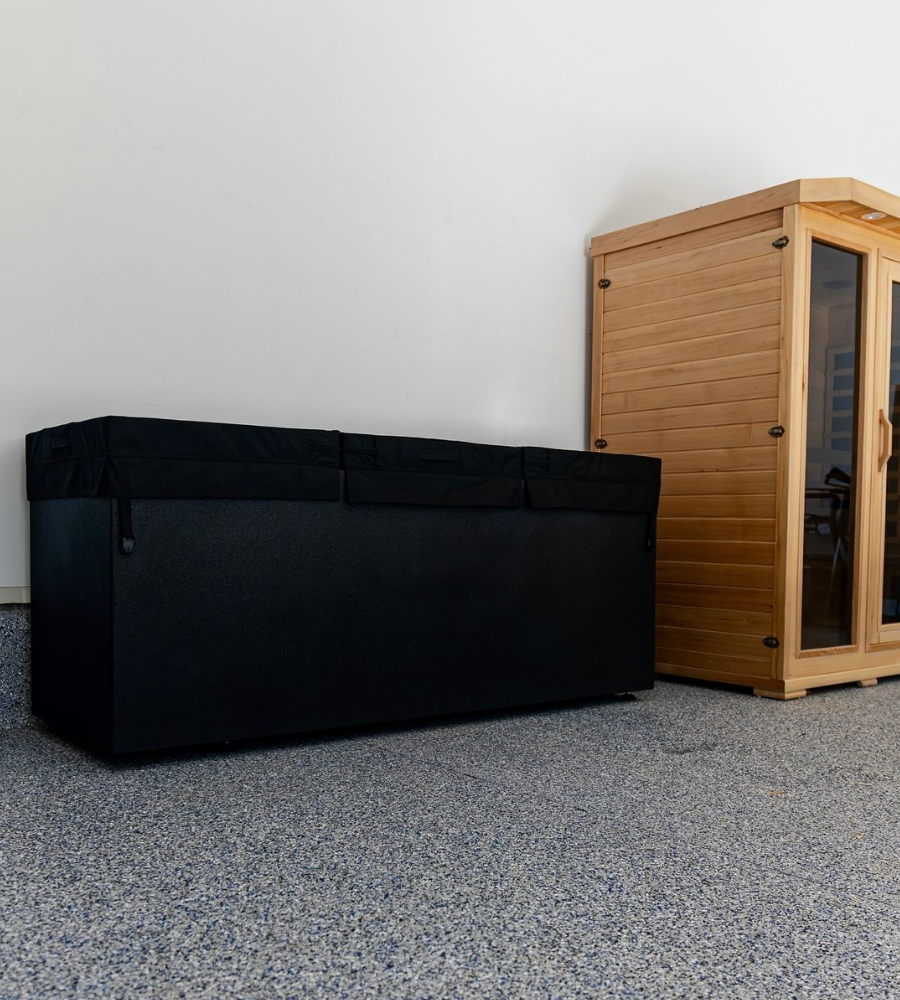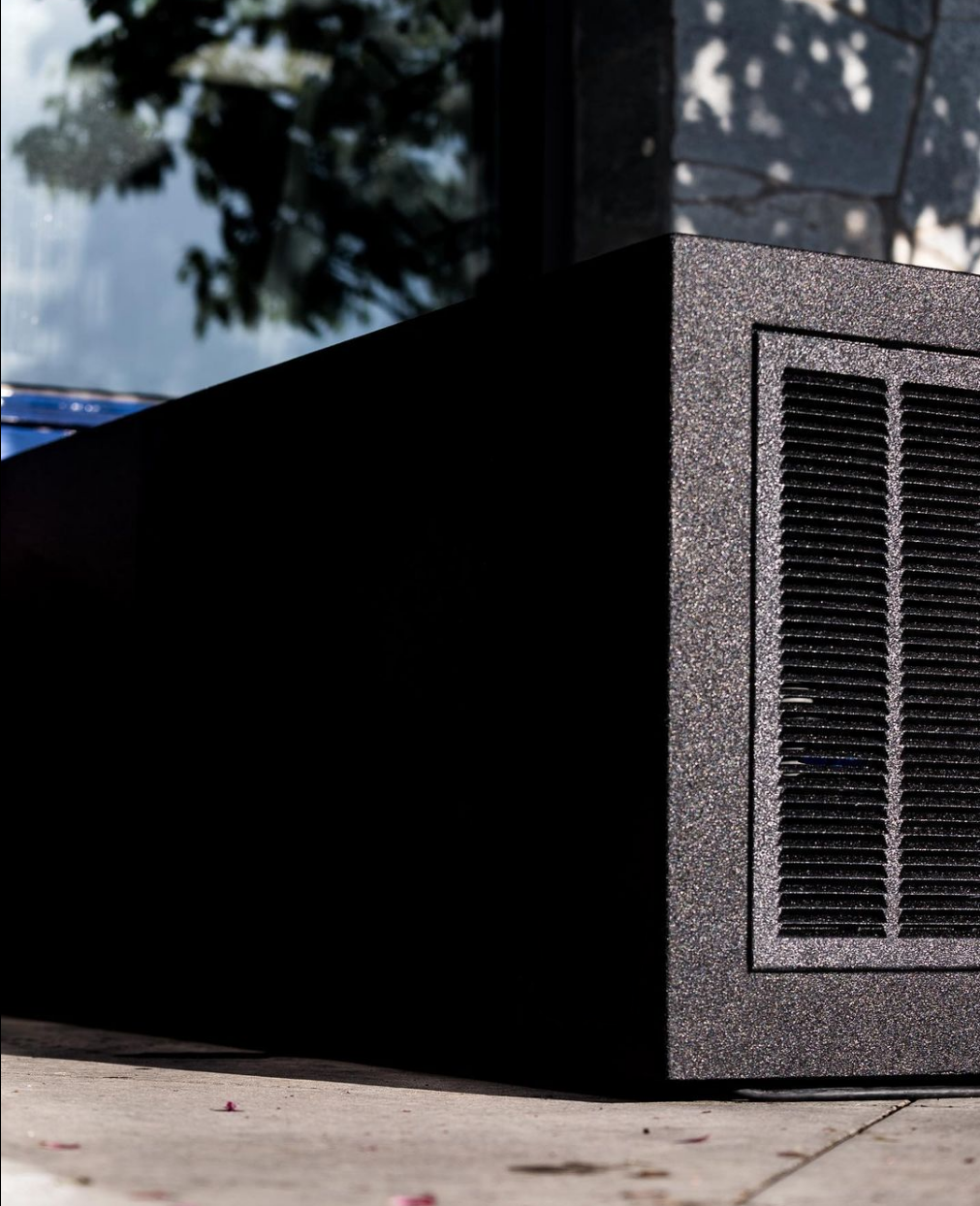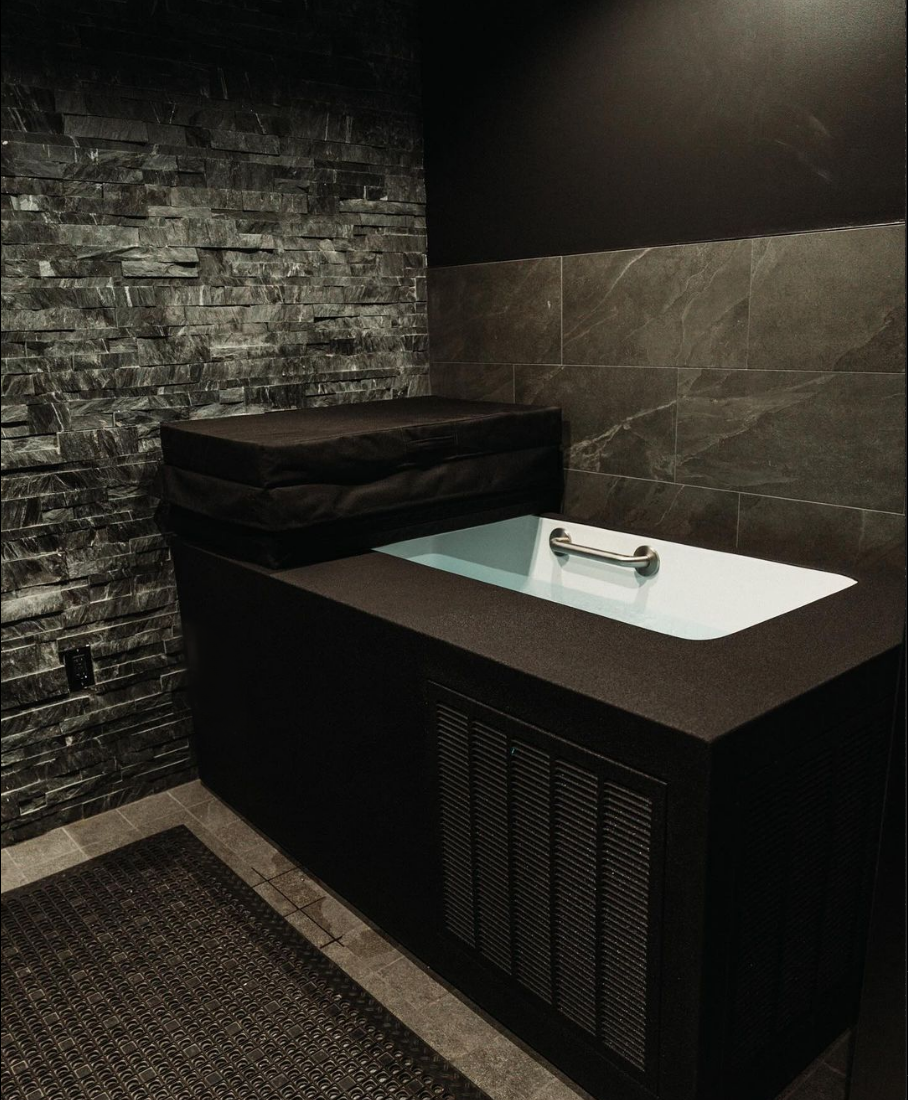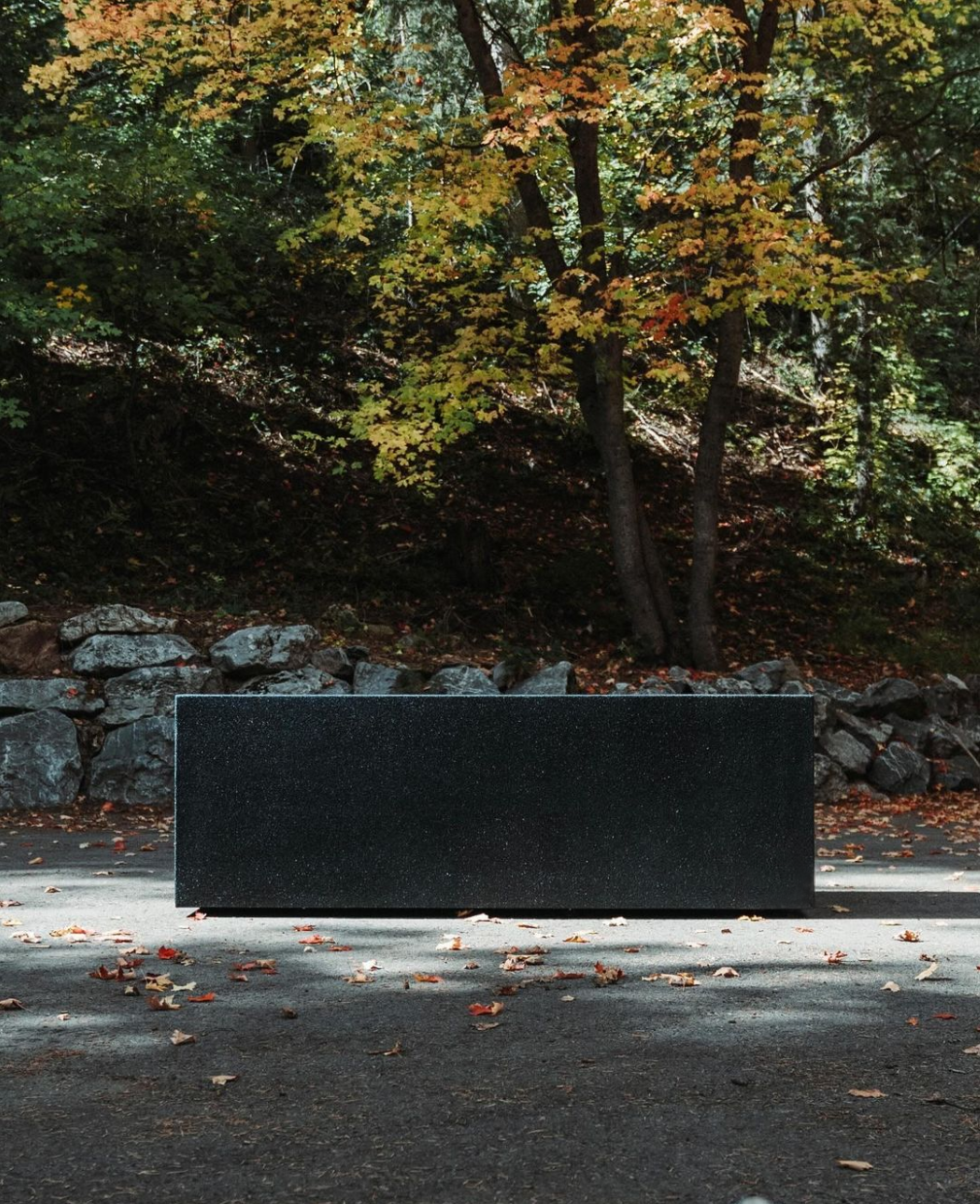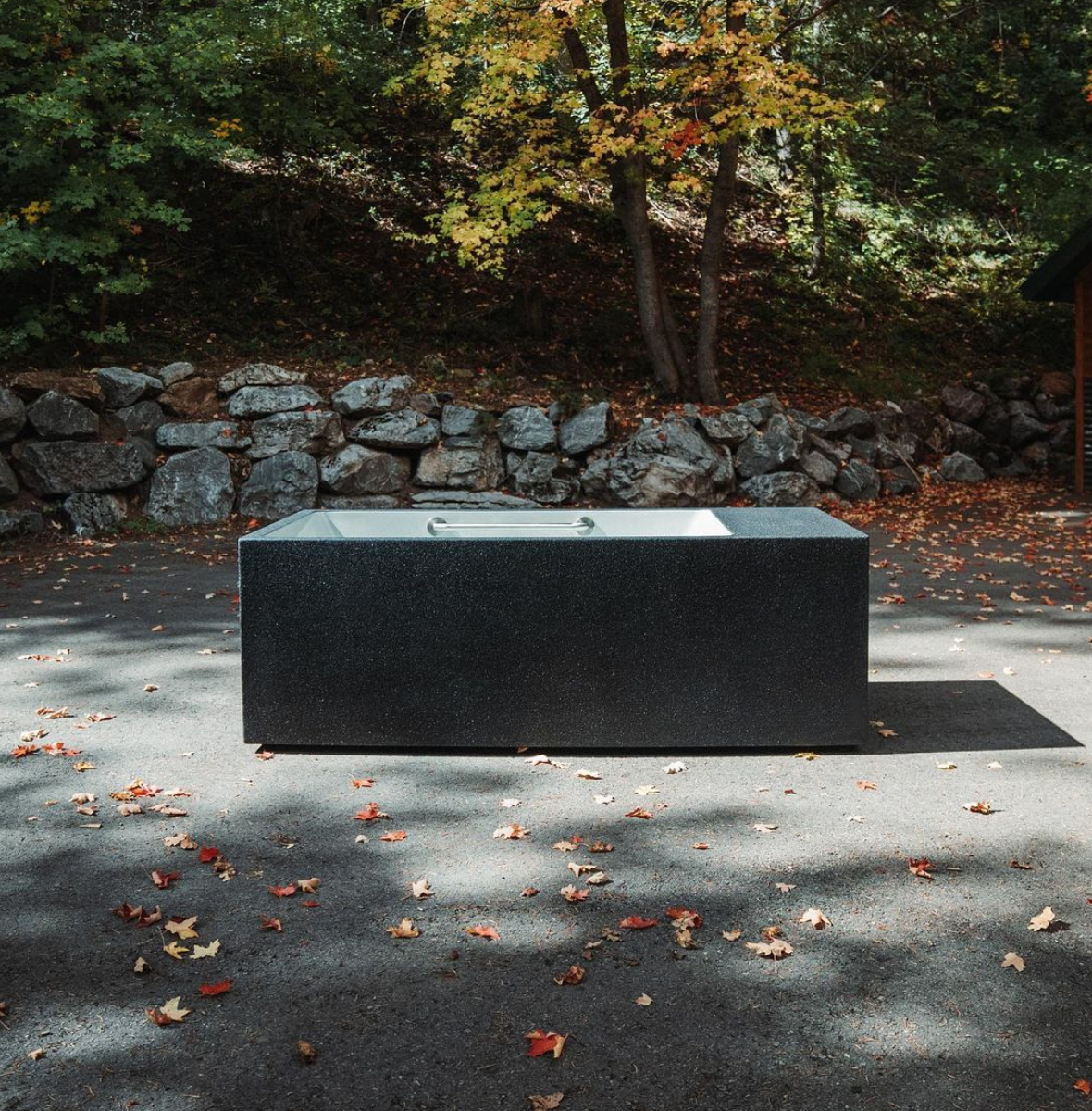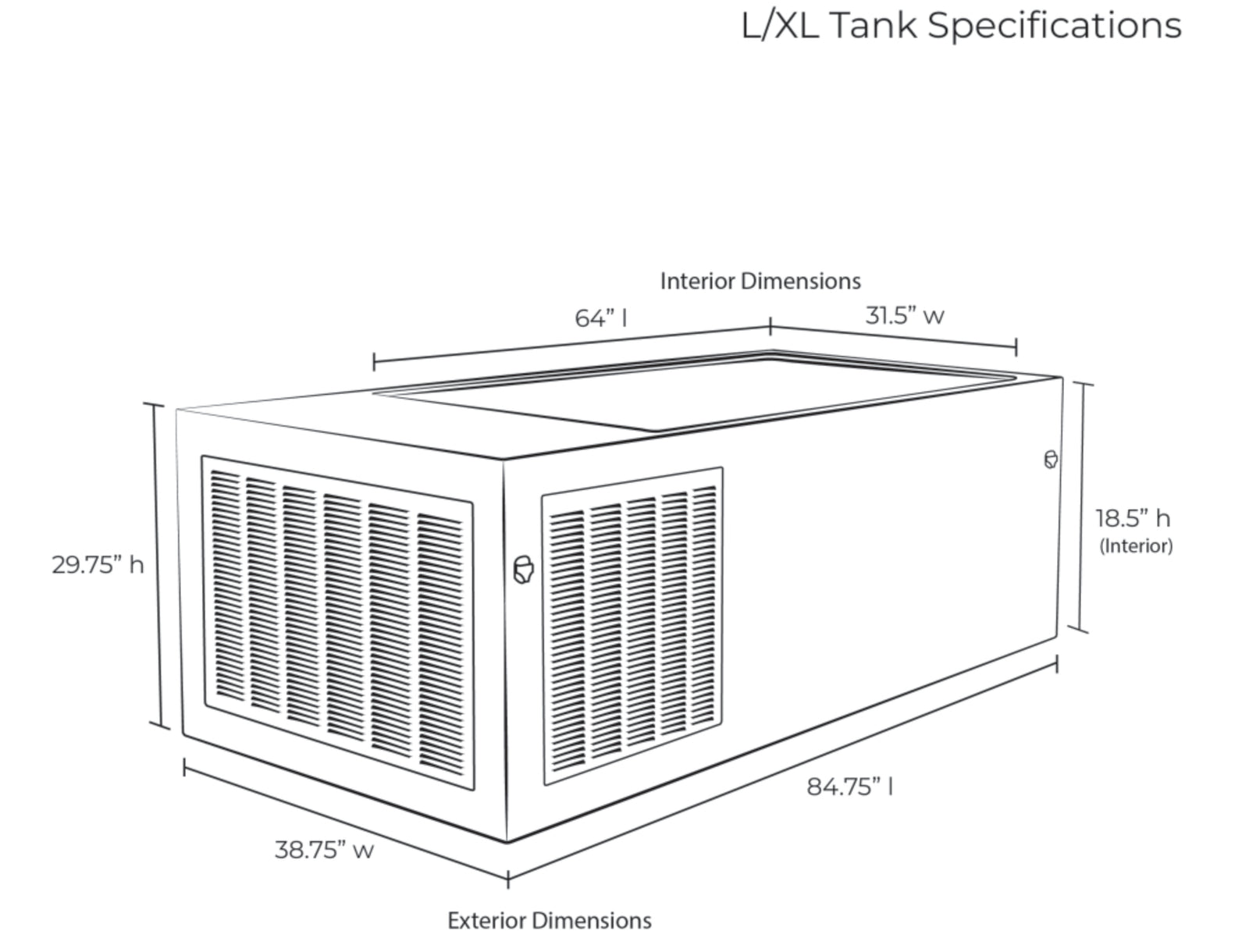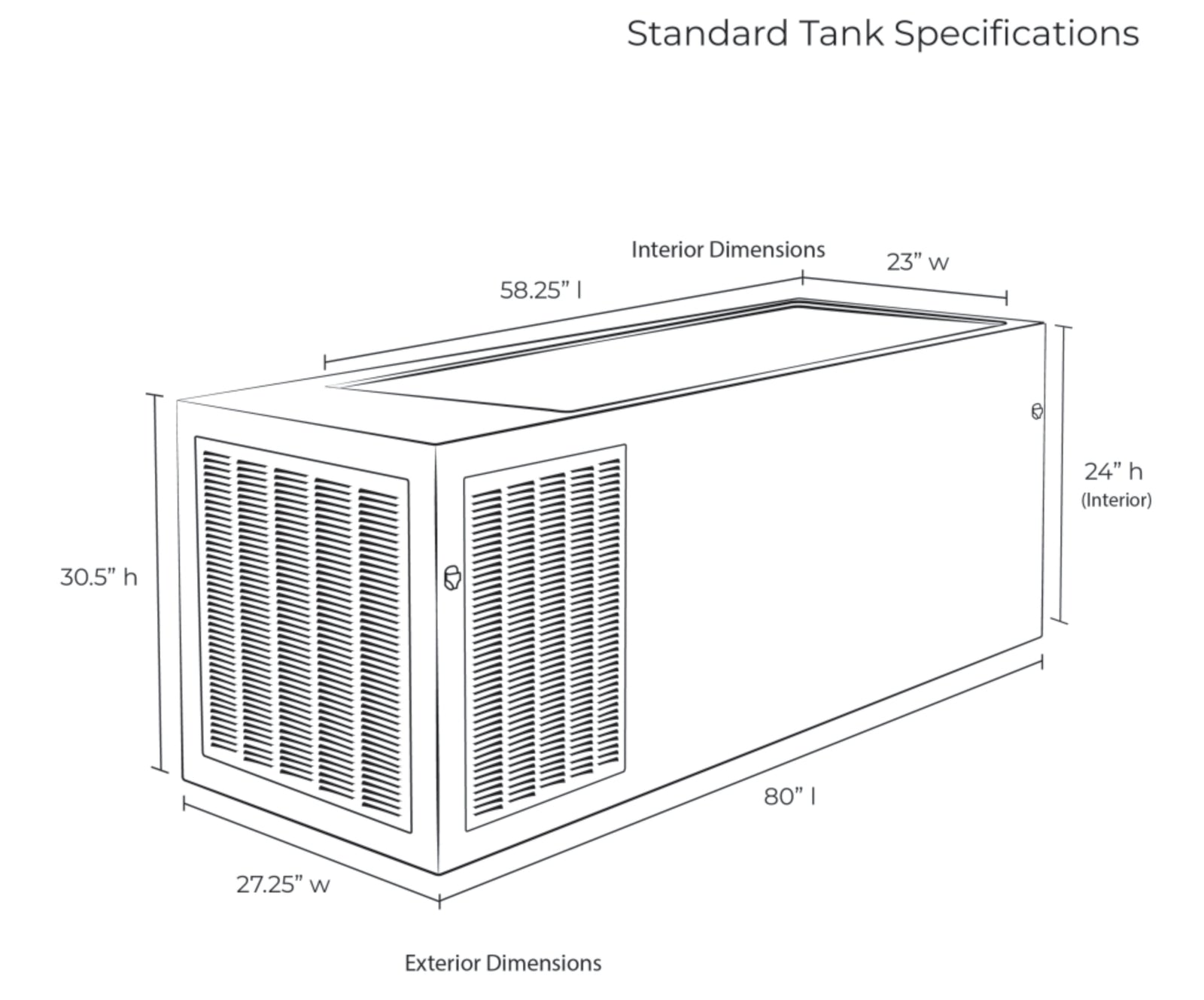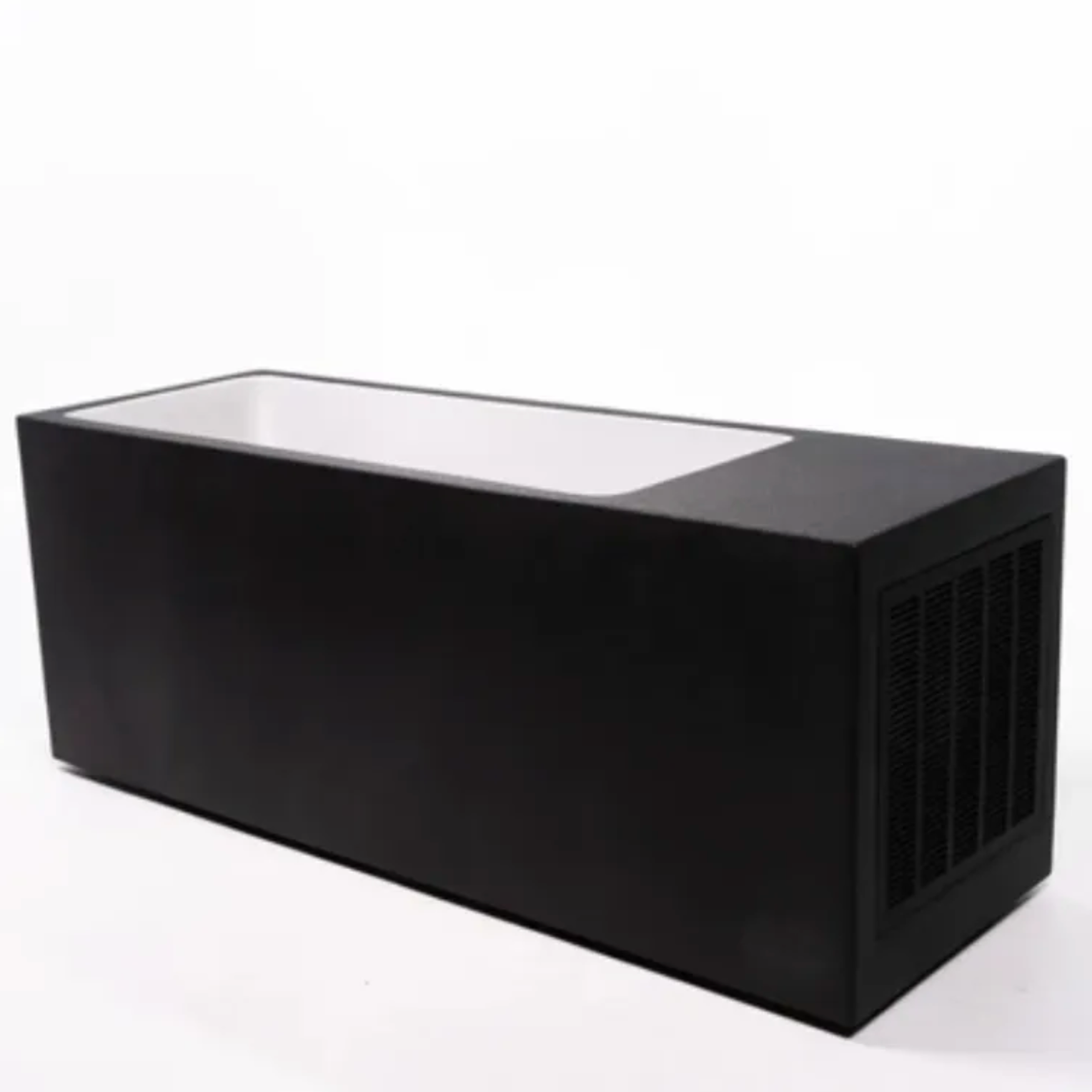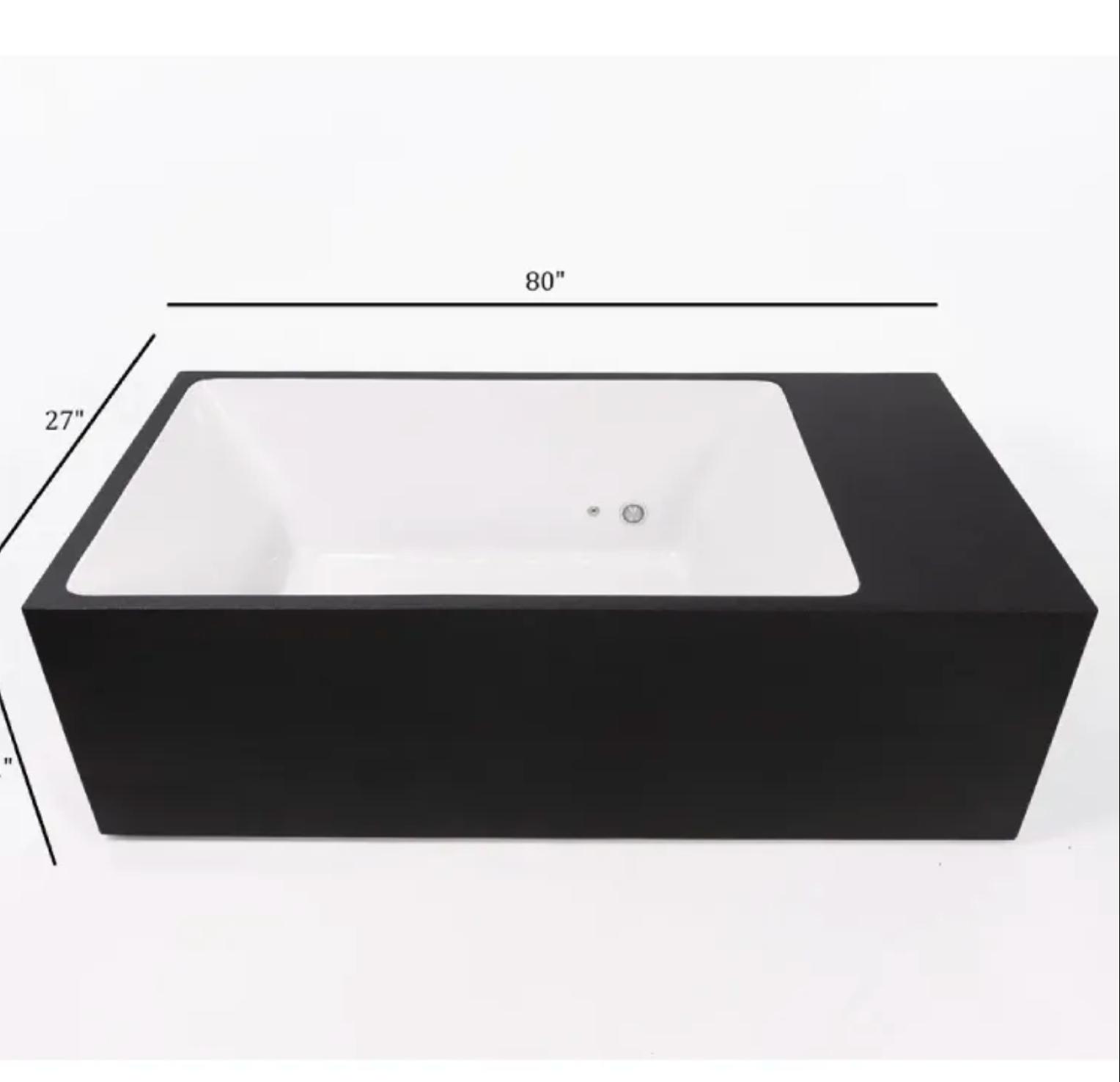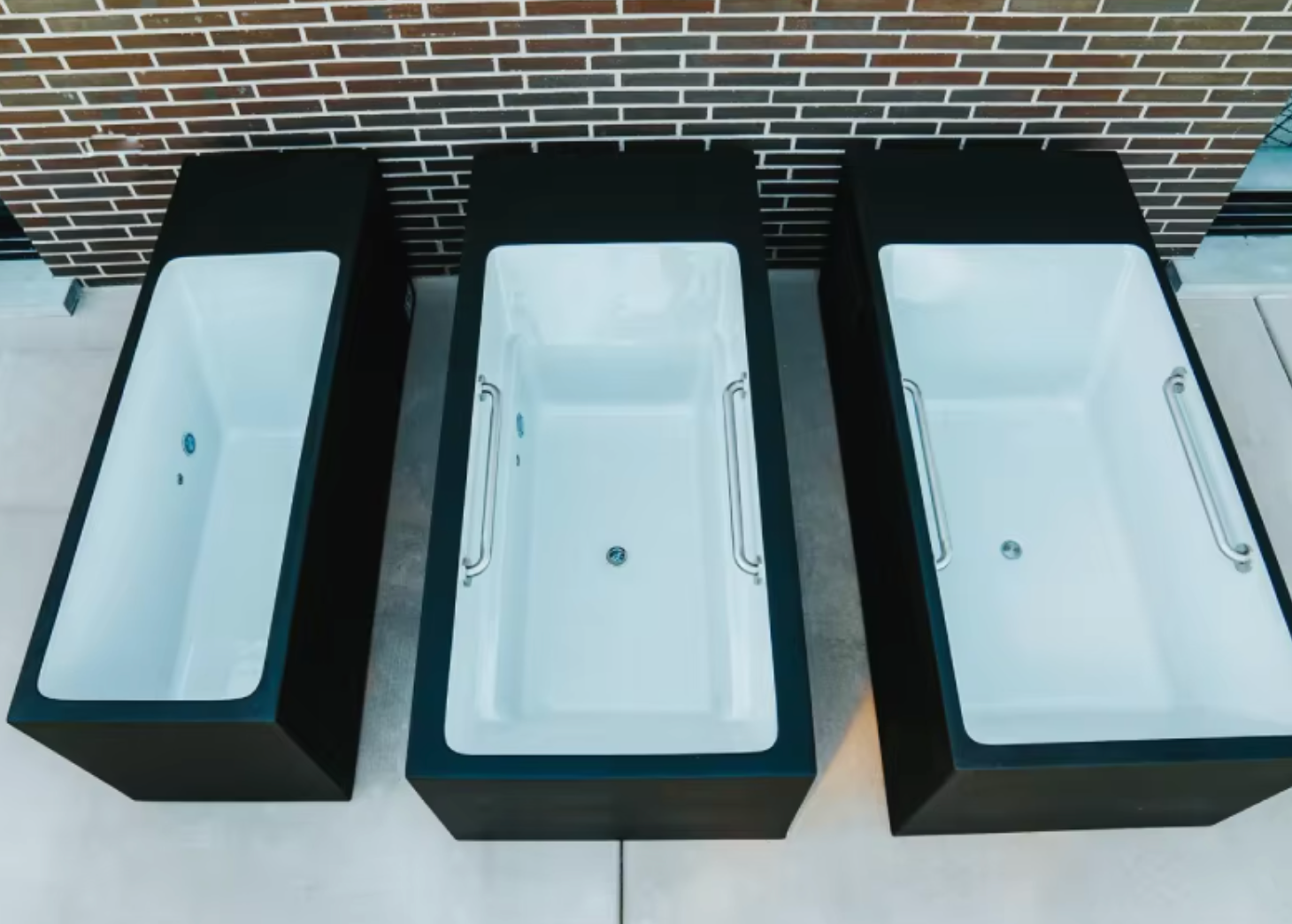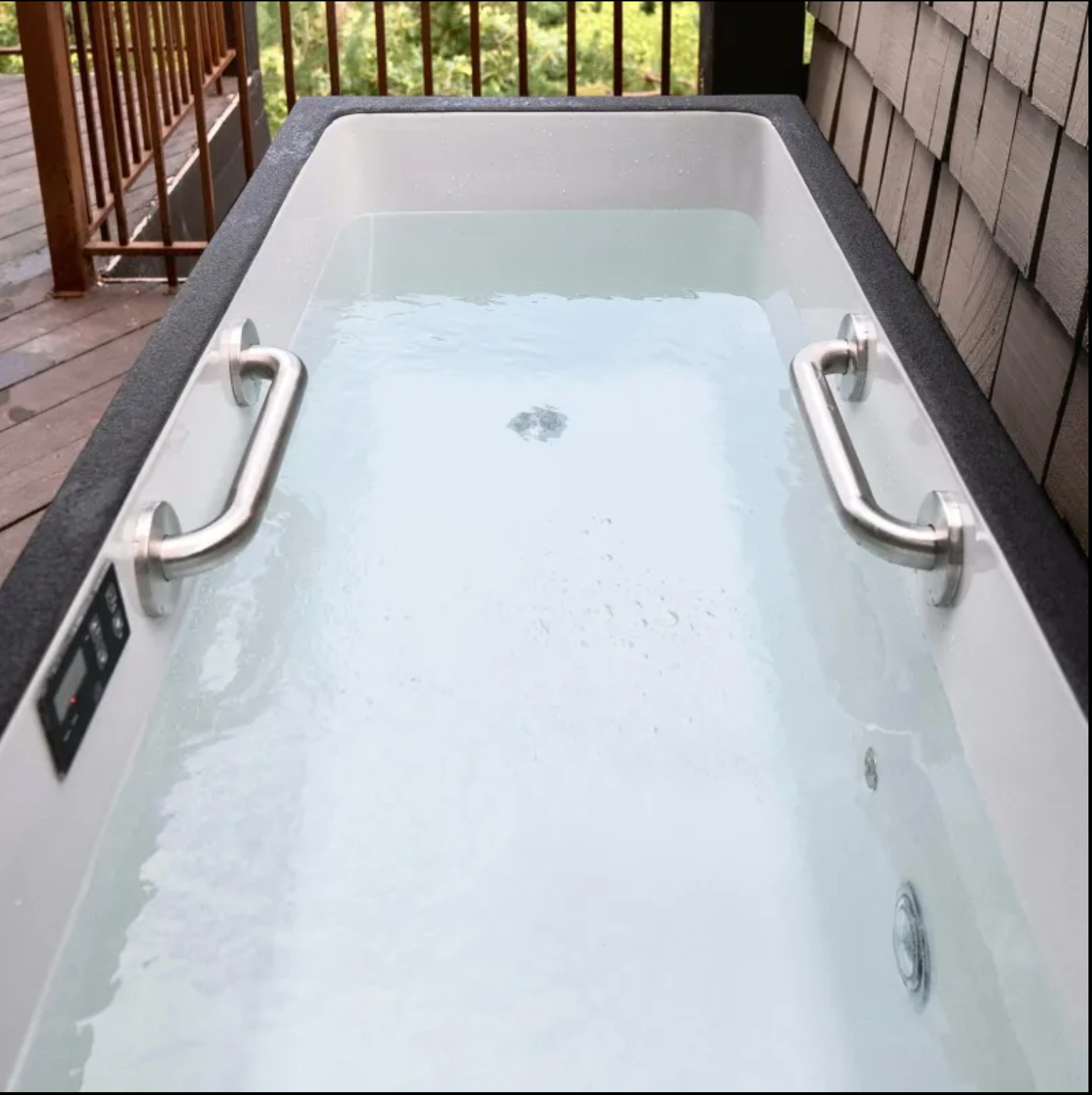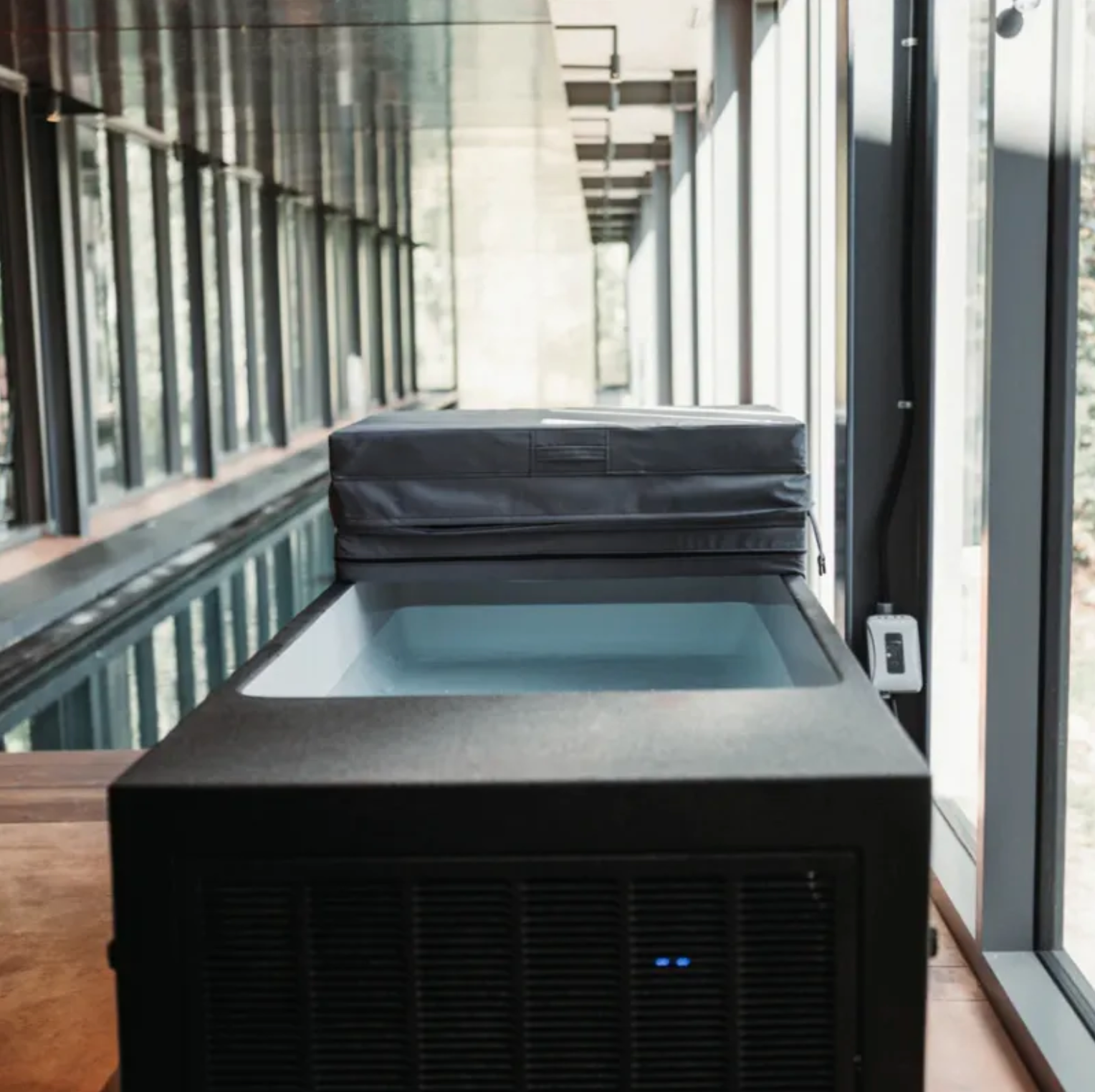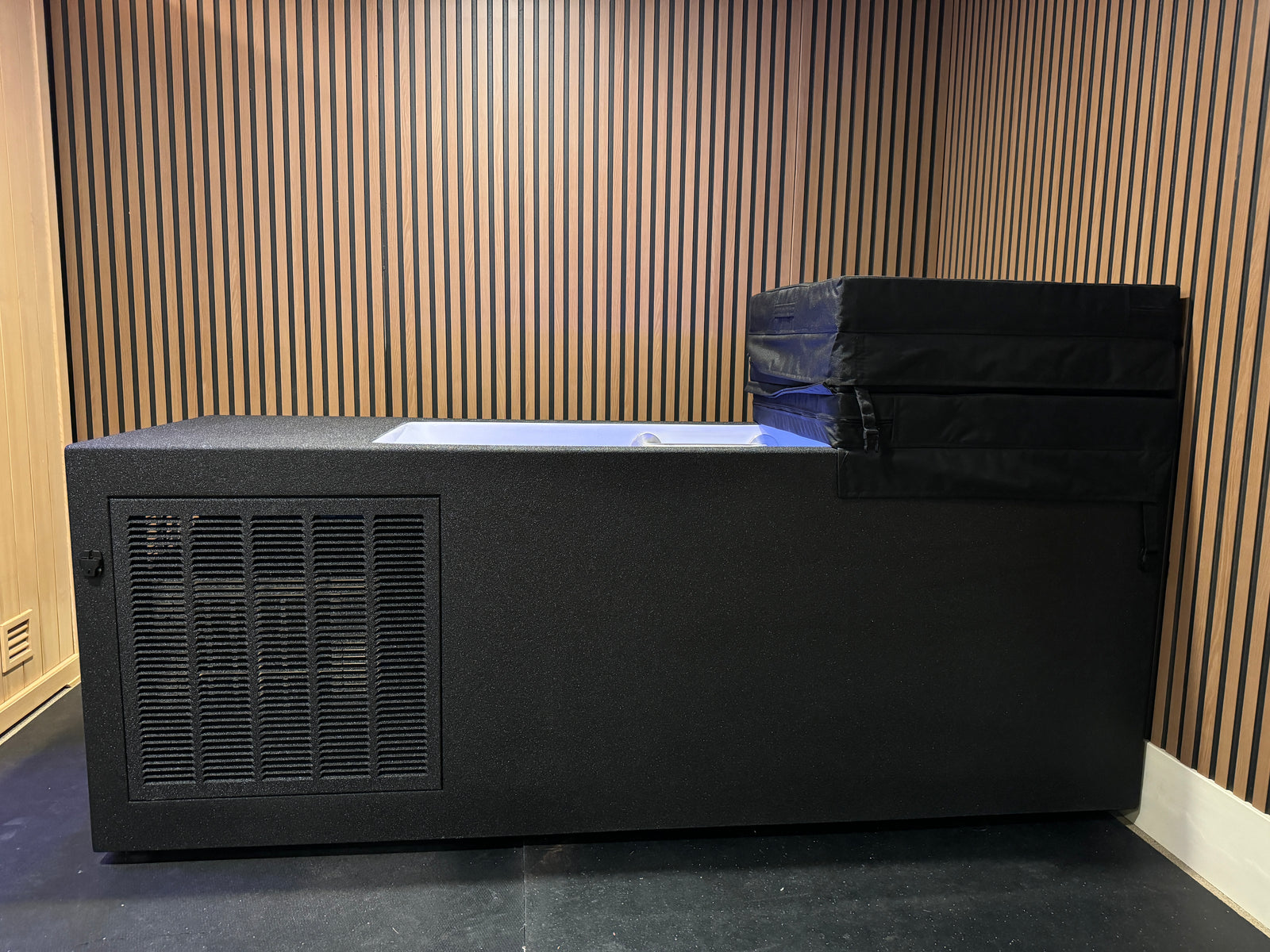LIMITED-TIME OFFER: CALL NOW FOR EXCLUSIVE PRICING ON OUR BEST-SELLING WELLNESS EQUIPMENT
LIMITED-TIME OFFER: CALL NOW FOR EXCLUSIVE PRICING ON OUR BEST-SELLING WELLNESS EQUIPMENT
COLD PLUNGES
- Description
- Considerations
- Shipping
- Money Back Guarantee
- FAQs
- Benefits
- Maintenance
- Cold Plunge FAQs
- Installation
- Financing
- Warranty
- White Glove Service
Chilly Dreams 110 - Standard Size
Our cold plunge is equipped with the ColdFlow Plunge System, expertly designed to deliver a superior cold immersion experience, promoting overall health and rejuvenation.
Dimensions: 30.5”H x 27.25”W x 80”L
Water Capacity: Up to 110 gallons (417 L)
Customization and Style
Elevate your space with our customizable color options. Tailor your Chilly Dreams cold plunge to seamlessly integrate with your décor, ensuring both functionality and visual appeal.
Product Options and Features
-
Self-Contained ColdFlow Tank: Elevate your wellness routine with our premium plunge tanks. Meticulously crafted with high-quality materials, each unit offers luxury and performance.
-
Plug & Play Design: Enjoy the industry’s simplest setup. The system plugs into a standard 110v household outlet and features an integrated garden hose fill and drain connection. Just set your desired temperature and let the automatic water chiller take care of the rest.
-
Custom Colors: Personalize your Chilly Dreams cold plunge to match your aesthetic preferences. Choose from a range of vibrant or subtle hues to complement your space, ensuring your plunge system enhances both functionality and style. Custom colors are an additional $700 and are finished with Sherwin-Williams automotive paint.

Experience Ultimate Rejuvenation with Chilly Dreams
The ColdFlow Plunge System is engineered for peak performance and comfort. By integrating cutting-edge cold plunge technology, it supports a healthy lifestyle through:
- Immune System Support: Regular cold exposure can strengthen your body's defenses.
- Increased Metabolism: Stimulate metabolic activity for improved energy levels.
- Enhanced Sleep Quality: Experience better sleep through effective temperature regulation.
-
Boosted Energy and Mood: Cold plunges can elevate your mood and invigorate your day.
Ensure your cold plunge system's seamless integration and optimal operation by adhering to these guidelines. For more information or assistance, please consult with our expert team. Photos may be shown with optional or unavailable features for marketing purposes only. If you have questions about standard equipment and options, feel free to contact us.
This product is designed for self-installation and does not require professional installation to maintain its warranty. Please note that professional installation services are not included in the freight price.
Documentation:
Chiller Specs for RejuvenTech Chilly Dreams Cold Plunge PDF
Chiller Manual for RejuvenTech Chilly Dreams Cold Plunge PDF
To ensure optimal performance and safety of your Chilly Dreams cold plunge, please consider the following key factors:
-
Child Safety and Insulation:
- Standard Lid: Comes with a 2-inch thick lid for superior insulation and enhanced child safety.
- Foldable Lid Option: Available in a 1/2 inch thickness for scenarios with space constraints. Consult with our team to choose the appropriate lid based on your installation needs. Ensure that the faucet is positioned considering the chosen lid type for both convenience and safety.
-
Electrical Requirements:
- A dedicated 20-amp GFCI (Ground Fault Circuit Interrupter) plug is required. For added ease, consider integrating a holiday switch or a smart plug for simple on/off control.
-
Space Requirements:
- Components occupy approximately 2.5 feet in width, 2.5 feet in depth, and 2 feet in height. Ensure the installation area accommodates these dimensions comfortably.
-
Ventilation:
- Proper ventilation is crucial. Whether installed within a cabinet, bench, or decorative unit, ensure ample space for air intake and heat dissipation from the chiller unit.
-
Accessibility for Service:
- The installation should allow easy access to the top of the plunge system for maintenance and repairs.
- Delivery
- Your Chilly Dreams Cold Plunge will be delivered via freight to the curb at the address provided. We will provide you with tracking details, including the LTL forwarder name. They will be provided your phone number in case they need to call you for directions, gate entrance, availability, or special delivery instructions.
- Note that the Chilly Dreams Cold Plunge does not require us to send a crew for installation. Therefore, the freight cost is just that, the freight cost, including the crate, inner packaging, and handling.
-
Installation Options:
- Built-In Installation: Seamlessly integrates into your space with either an undermount or "drop-in" option. Ensure proper ventilation and accessibility for maintenance.
- Freestanding Tub Setup: Allows customization and aesthetic integration within a bench or cabinet. Proper ventilation and service access remain essential.
- Self-Contained Portable Unit (Plug n Play): Offers convenience with minimal setup. Simply place the unit, plug it into a dedicated power source, and enjoy the benefits of cold plunge therapy.
-
Shipping & White Glove Delivery Policy
We strive to ensure a seamless delivery experience for all orders, whether small parcels or large freight shipments. Below are the details regarding shipping timelines, freight coordination, and premium White Glove service options:
-
Processing & Lead Times – Most products ship within 7 business days, unless otherwise specified (e.g., custom-built items requiring additional lead time).
-
Shipping Methods & Timeframes:
- Small Parcel (UPS/FedEx): Typically arrives within 3-4 business days once shipped.
- Freight Shipments: Delivery times vary based on the product, destination, and carrier availability.
-
Tracking & Delivery Coordination:
- Tracking information is provided for all shipments.
- Standard freight deliveries are curbside only—customers are responsible for arranging transport from the curb to the final location.
- For freight deliveries, we will contact you beforehand to confirm that you or an authorized representative will be present during the estimated delivery timeframe.
-
White Glove Service & Installation:
- For select high-end products requiring professional installation, White Glove service is included in the shipping cost.
- Our expert team will deliver, install, and fully set up your equipment, ensuring proper functionality and providing a full product walkthrough.
- White Glove service varies depending on the product—please refer to individual product pages for details.
If you have any questions regarding shipping, freight coordination, or White Glove service, please contact our office for assistance.
-
We are committed to your satisfaction and proudly offer a 30-day money back guarantee.
FREE AND EASY RETURNS
- We accept returns within 30 days of delivery.
- We pay return shipping.
- No restocking fee.
CONDITIONS
- Product(s) must be in the condition in which they arrived and not be altered in any way.
- All returned items must be in the original packaging.
- We kindly ask that you provide your order number and reason for the return (to improve our customer service).
You will be provided a shipping label and packing slip within three (3) business days.
Approved refund will be issued within three (3) business days of arrival to allow time for inspection.
Exception is for returns of products explicitly listed as FINAL SALE. No fine print. You will know if it is a final sale product when you make the purchase.
Do the products come pre-assembled or require assembly?
- Some require assembly, it just depends. This should be clear in the product description and attached manuals. If you have any questions, feel free to contact us.
- You can check the bottom of the description page to see if this is one of those products that invludes professional install.
- If professional installation is required, this will be provided through us.
- We do all we can to provide a turnkey service.
- Note: Any installation cost is "built in" to the shipping cost.
- All equipment comes with user manuals and technical support. Exception are products which, for obvious reasons, require neither, such as face creams and supplements.
Can these products be used both indoors and outdoors?
Generally-speaking, yes, most of them can, with some exception. Use your own best judgment, as we cannot be held liable for damage incurred by the end user.
Massage chairs, cryotherapy and hyperbaric oxygen chambers should be placed indoors to prevent unwanted wear.
Cold plunges require a wet room. Basically, you need a drain, or at least something to drain the water in to.
Some products, such as saunas and cryotherapy chambers, may require venting.
Are replacement parts available and how can I get them?
Replacement parts are available through us or the manufacturer. All of our new products come with warranties which include replacement parts.
What happens if I have a technical issue or need support?
Call us. We’re here to help!
Why Buy From Us?
Exclusive Selection
At RejuvenTech, we curate a premier assortment of high-end fitness equipment, ensuring that you have access to the latest and most sophisticated products on the market.
Fixed Shipping Rate
Enjoy the convenience of prompt shipping across the continental USA without the burden of additional costs – transparency at its best.
Quick Ship-out Time
Your item usually ships out within 2 business days of order confirmation.
Hassle-Free Returns
Your confidence is paramount – benefit from our 30-Day Easy Returns policy if your purchase doesn't meet your expectations, with a full refund guaranteed.
Customer Service Excellence
First Class Customer Service isn't just a phrase; it's our ethos. We pride ourselves on providing an unparalleled customer experience.
Authorized Retailer
Shop with confidence, ensuring you receive genuine products, full manufacturer warranties, and unparalleled support.
Commitment to Satisfaction
We are confident in the quality of our handpicked selection. However, should an issue arise, rest assured that we are dedicated to rectifying it to ensure your complete satisfaction.
- Relief from muscle soreness: Shown to alleviates muscle soreness and aid in workout recovery.
- Inflammation reduction: May reduce inflammation, which can be beneficial for overall health and recovery.
- Immunity boost: Can improve immunity and boost the body’s natural defenses.
- Cardiovascular health: Can improve blood flow, reduce heart rate, and enhance overall cardiovascular health.
- Improved circulation: May improve circulation, thanks to the constriction of blood vessels, which can aid in recovery and overall well-being.
- Mental health benefits: Has been linked to treating depression and improving mood, potentially boosting levels of dopamine and endorphins.
- Recovery and sleep: Can improve sleep quality and aid in recovery after exercise.
- Fat-burning: Cold exposure, including cold plunging, can increase fat-burning and improve metabolic health.
- General well-being: Many individuals report improved overall well-being and mental clarity after incorporating cold plunging into their routine.
For more information on the benefits of cold plunges and ice baths, check out our blog.
*These statements have not been evaluated by the FDA. These products are not intended to diagnose, treat, cure, or prevent any disease. Just like with diet or exercise programs, you should check with your physician before using cold or cryo therapy.
Maintaining a cold plunge is essential to ensure its longevity, hygiene, and safety for users. Here’s a detailed guide on the maintenance required for cold plunges:
1. Regular Cleaning
- Water Quality Maintenance: The water in a cold plunge should be kept clean and clear. This involves regular filtration, chemical balancing (such as with chlorine or bromine), and water testing. Water should be tested frequently—ideally daily—for pH, chlorine/bromine levels, and overall cleanliness to ensure it remains safe for users.
- Draining and Refilling: Depending on usage, it may be necessary to drain and refill the plunge pool periodically. High-use facilities may need to do this more frequently, perhaps every 1-2 weeks, while lower-use units may require it less often. This prevents the buildup of contaminants that cannot be filtered out.
- Surface Cleaning: The surfaces of the plunge pool should be scrubbed and disinfected regularly to prevent the buildup of biofilm, algae, or other residues. Use a non-abrasive cleaner to avoid damaging the material of the pool.
- Skimming: Regularly skim the surface of the water to remove any debris, such as leaves or insects, that may have fallen into the pool.
2. Filtration System Maintenance
- Filter Cleaning/Replacement: The filter system plays a crucial role in maintaining water quality. Filters should be checked regularly and cleaned according to the manufacturer’s instructions. Depending on the type of filter, it may need to be replaced every few months.
- Pump Maintenance: Ensure the water pump is functioning correctly. This includes checking for proper flow rates and inspecting for any leaks or unusual noises. The pump should be serviced periodically to maintain optimal performance.
3. Temperature Control
- Chiller Maintenance: Cold plunges typically use a chiller to maintain low water temperatures. The chiller should be inspected regularly to ensure it’s operating efficiently. This includes checking refrigerant levels, inspecting electrical connections, and ensuring the coils are clean.
- Thermostat Calibration: Periodically check the thermostat to ensure the water is being cooled to the correct temperature. Calibration may be required if the temperature readings seem inaccurate.
4. Electrical System Checks
- Inspect Electrical Components: Ensure that all electrical components, including the chiller, pump, and control systems, are functioning properly. Look for any signs of wear, corrosion, or damage to electrical connections and have them repaired by a professional if necessary.
- Ground Fault Circuit Interrupter (GFCI) Testing: The cold plunge should be equipped with a GFCI for safety. Test this regularly to ensure it is working correctly, as it protects against electrical shock.
5. Structural Integrity
- Check for Leaks: Regularly inspect the plunge pool for any signs of leaks, which can occur in the plumbing, seals, or the structure of the pool itself. Address any leaks promptly to prevent damage and water waste.
- Inspect Seals and Joints: Ensure that all seals and joints around the pool are intact and watertight. Over time, seals may wear out and need replacement.
6. Sanitization and Disinfection
- Regular Disinfection: In addition to maintaining chemical balance, it’s important to regularly disinfect the plunge pool to prevent the growth of harmful bacteria. This may involve shocking the water with a higher concentration of chlorine or using a dedicated sanitizing solution.
- UV or Ozone Systems: If the cold plunge is equipped with a UV or ozone sanitization system, ensure these are functioning properly. These systems help reduce the need for chemical sanitizers by killing bacteria and other pathogens.
7. User Guidelines and Hygiene
- Encourage Proper Hygiene: Encourage users to shower before entering the cold plunge to minimize the introduction of sweat, oils, and other contaminants. Providing clear guidelines on pre-use hygiene can significantly reduce the maintenance burden.
- Limit Usage per Session: Establish guidelines for how many people can use the cold plunge at one time and how long they should stay in. This helps prevent overuse and excessive contamination.
8. Seasonal Maintenance
- Winterization: If the cold plunge is outdoors and located in a region with freezing temperatures, winterizing may be necessary. This involves draining the pool and properly storing the equipment to prevent freeze damage.
- Spring Startup: After winter, thoroughly inspect all components, clean the pool, and replace or service any parts as needed before refilling and using the cold plunge.
9. Professional Inspections
- Annual Inspections: Consider having a professional perform an annual inspection of the cold plunge, especially if it’s heavily used in a commercial setting. This can help identify and address any potential issues before they become major problems.
Regular and thorough maintenance of a cold plunge not only ensures a safe and enjoyable experience for users but also extends the life of the equipment, making it a worthwhile investment for any facility.
What are the benefits of cold plunging?
Cold plunging offers a variety of benefits, both physical and mental. Physically, it can reduce inflammation, improve circulation, enhance recovery after exercise, and boost the immune system. Cold exposure stimulates the vagus nerve, which helps to reduce stress and improve overall mood. Many people also report increased energy levels and improved mental clarity after regular cold plunging sessions.
How long should I stay in a cold plunge?
The optimal duration for a cold plunge varies depending on your experience and tolerance. For beginners, it’s recommended to start with shorter durations, such as 1 to 2 minutes, and gradually increase the time as your body acclimates to the cold. More experienced users might stay in the cold plunge for 5 to 10 minutes. However, it's crucial to listen to your body and exit the plunge if you feel excessively cold, numb, or uncomfortable.
How cold should the water be for a cold plunge?
The typical temperature range for a cold plunge is between 50°F to 59°F (10°C to 15°C). This range is cold enough to elicit the therapeutic benefits without being too extreme for most users. Some advanced practitioners may opt for even colder temperatures, but it’s important to ensure the water is not so cold that it causes shock or injury.
How often should I do cold plunges?
The frequency of cold plunges depends on individual goals and tolerance. Many people find benefits with cold plunging 2 to 3 times per week, while others may incorporate it into their daily routine. As with any wellness practice, consistency is key, but it's also important to allow the body time to recover between sessions, especially if you're new to cold exposure.
Is cold plunging safe for everyone?
While cold plunging can be safe for most people, it’s not recommended for individuals with certain medical conditions, such as heart problems, high blood pressure, or circulatory issues. Pregnant women and those with severe cold sensitivity should also consult a healthcare provider before trying cold plunging. It’s always advisable to start with short, less intense sessions and gradually build up as your body adapts.
What should I do before and after a cold plunge?
Before a cold plunge, it’s a good idea to warm up the body with light exercise or stretching to get your blood flowing. After exiting the plunge, gently warm up with a towel or blanket, and consider doing some light movement or a warm shower to gradually bring your body temperature back to normal. Avoid immediately jumping into hot water, as this can cause a rapid change in body temperature that might be uncomfortable or unsafe.
Can cold plunging help with muscle recovery?
Yes, cold plunging is widely used by athletes for muscle recovery. The cold temperature helps to reduce inflammation and muscle soreness by constricting blood vessels and decreasing metabolic activity, which can alleviate pain and speed up the recovery process. It's particularly effective after intense workouts or competitions.
What are the mental benefits of cold plunging?
Cold plunging can have significant mental health benefits. The exposure to cold water triggers a release of endorphins and other neurotransmitters that enhance mood and reduce stress. Regular cold plunging can also improve resilience and mental toughness by helping individuals learn to stay calm and focused in uncomfortable situations. Many people report feeling more energized, clear-headed, and emotionally balanced after incorporating cold plunges into their routine.
What are the benefits of offering cold plunges at a spa or gym?
Cold plunges can significantly enhance the service offerings at spas and gyms by providing clients with a unique wellness experience. The benefits include improved muscle recovery, reduced inflammation, enhanced circulation, and increased energy levels. For spas, cold plunges can complement other treatments like massages or saunas, creating a holistic wellness routine. For gyms, they are particularly appealing to athletes and fitness enthusiasts looking for effective recovery methods.
How much space is required to install a cold plunge at a facility?
The space required for a cold plunge installation depends on the size and model of the plunge pool. Typically, a standard cold plunge pool might require an area of about 6’ x 6’, with additional space needed around it for safe entry and exit. Smaller, portable units might require less space, while custom-built or larger commercial models could need more room. It’s also important to consider the plumbing and drainage requirements when planning the installation.
What is the cost of installing and maintaining a cold plunge?
The cost of installing a cold plunge can vary widely depending on the size, model, and whether it’s a portable or built-in unit. Installation costs typically range from $5,000 to $20,000 or more, with higher-end commercial units at the upper end of the scale. Maintenance costs include regular cleaning, water treatment, and ensuring the mechanical components like chillers and filters are functioning properly. Maintenance is generally straightforward, but it’s essential to budget for ongoing upkeep to keep the plunge in optimal condition.
How do I market cold plunges to my clients?
Marketing cold plunges effectively involves educating clients on the numerous health benefits they offer, such as faster muscle recovery, improved circulation, and stress relief. Highlight these benefits in promotional materials, social media campaigns, and during client consultations. Offering introductory sessions, bundled packages with other treatments, or memberships that include cold plunge access can also attract clients. Testimonials and positive reviews from existing clients who have experienced the benefits can be powerful tools to draw in new users.
What are the safety considerations for offering cold plunges in a spa or gym?
Safety is paramount when offering cold plunges. It’s important to have clear guidelines for clients on how to use the plunge safely, including recommended time limits and temperature ranges. Staff should be trained to monitor clients for signs of discomfort or adverse reactions, and there should be clear procedures for dealing with emergencies. Additionally, ensure that the plunge area is equipped with non-slip surfaces, handrails, and proper signage to prevent accidents. Regular maintenance checks are also crucial to ensure the equipment is functioning safely and the water quality is maintained.
What is the difference between a cold plunge and an ice bath?
The main difference between a cold plunge and an ice bath lies in their setup, temperature, and typical use. Here's a breakdown of the key distinctions:
1. Setup and Equipment
-
Cold Plunge: A cold plunge typically refers to a specially designed pool or tub filled with cold water that is kept at a consistent low temperature using a built-in cooling system. Cold plunge pools are often found in spas, gyms, and wellness centers, and they are designed for repeated use with little maintenance. The water in a cold plunge is generally circulated and filtered, maintaining cleanliness and temperature consistency.
-
Ice Bath: An ice bath is usually a temporary setup where a tub, bath, or container is filled with water and then cooled by adding ice. The temperature of an ice bath is controlled by the amount of ice added, and it can fluctuate as the ice melts. Ice baths are often prepared on an ad-hoc basis, particularly for athletic recovery, and do not typically have a built-in system to maintain the temperature over time.
2. Temperature
-
Cold Plunge: The water temperature in a cold plunge is typically maintained between 50°F to 59°F (10°C to 15°C). The cooling system ensures that the temperature remains stable throughout the duration of the plunge, providing a consistent experience.
-
Ice Bath: Ice baths can reach lower temperatures than cold plunges, often ranging from 32°F to 50°F (0°C to 10°C), depending on the amount of ice used. The temperature can vary during the session as the ice melts and the water warms up slightly.
3. Typical Use
-
Cold Plunge: Cold plunges are often used in a more controlled, spa-like environment and are designed for repeated use by multiple people throughout the day. They are popular for their health benefits, including reducing inflammation, improving circulation, and enhancing recovery after exercise. Cold plunges are also often part of a wellness routine, used in conjunction with saunas or steam rooms.
-
Ice Bath: Ice baths are more commonly used by athletes and fitness enthusiasts immediately after intense physical activity to reduce muscle soreness and inflammation. Because ice baths can be prepared quickly using available ice, they are convenient for short-term use but are less consistent in terms of temperature control compared to cold plunges.
4. Comfort and Accessibility
-
Cold Plunge: Due to the controlled environment and stable temperatures, cold plunges are generally more comfortable and easier to use regularly. The consistent temperature and cleanliness make them ideal for routine use in wellness settings.
-
Ice Bath: Ice baths can be more intense and less comfortable, especially for those who are not accustomed to extreme cold. The initial shock of entering an ice bath can be greater due to the lower temperatures, making it a more challenging but effective method for quick recovery.
In summary, while both cold plunges and ice baths offer similar benefits related to cold exposure therapy, cold plunges provide a more controlled, consistent, and often more comfortable experience, typically found in professional wellness settings. Ice baths, on the other hand, are more commonly used in athletic recovery scenarios and involve a more makeshift setup with potentially lower, more variable temperatures.
What is the difference between cold plunging and whole-body cryotherapy?
Cold plunging and whole-body cryotherapy are both methods of exposing the body to extreme cold for therapeutic benefits, but they differ significantly in their processes, temperatures, duration, and the mechanisms by which they provide benefits. Here’s a detailed comparison:
1. Process and Environment
-
Cold Plunging: Cold plunging involves immersing the body in cold water, typically in a specially designed plunge pool or tub. The water temperature is usually maintained between 50°F to 59°F (10°C to 15°C). The body is fully submerged, except for the head in some cases, and the cold water directly contacts the skin, cooling the body gradually.
-
Whole-Body Cryotherapy: Whole-body cryotherapy (WBC) involves standing in a cryotherapy chamber or cryosauna, where the body is exposed to extremely cold, dry air, typically cooled by liquid nitrogen or refrigerated cold air. The temperatures in these chambers can drop to between -200°F and -300°F (-129°C to -184°C). The exposure is brief, usually lasting 2 to 4 minutes, and the body is surrounded by the cold air rather than being immersed in a liquid.
2. Temperature
-
Cold Plunging: The water in a cold plunge is cold but not nearly as extreme as cryotherapy, typically maintained between 50°F to 59°F (10°C to 15°C). The cold water gradually lowers the body’s temperature, allowing for a controlled and steady cooling process.
-
Whole-Body Cryotherapy: Cryotherapy involves exposure to much colder temperatures, often as low as -200°F to -300°F (-129°C to -184°C). These extreme temperatures cause a rapid cooling of the skin’s surface without lowering the core body temperature significantly.
3. Duration
-
Cold Plunging: Sessions in a cold plunge usually last between 5 to 15 minutes, depending on the individual’s tolerance and experience level. The body is gradually cooled as it remains immersed in the water.
-
Whole-Body Cryotherapy: Due to the extreme cold, cryotherapy sessions are much shorter, typically lasting only 2 to 4 minutes. The brief exposure time is sufficient to trigger the desired physiological responses without causing harm.
4. Mechanism of Action
-
Cold Plunging: The cooling effect in cold plunging is due to the direct contact of cold water with the skin, which gradually lowers the body temperature, reducing inflammation, and promoting muscle recovery. The cold water constricts blood vessels, reduces swelling, and numbs nerve endings, which can help alleviate pain and soreness.
-
Whole-Body Cryotherapy: Cryotherapy works by rapidly cooling the skin’s surface temperature, which triggers a systemic response from the body. The extreme cold causes blood vessels to constrict and redirect blood to the core to protect vital organs. After leaving the chamber, the blood vessels dilate, and oxygenated, nutrient-rich blood flows back to the extremities, promoting healing and reducing inflammation.
5. Accessibility and Equipment
-
Cold Plunging: Cold plunging requires access to a cold plunge pool or tub, which can be set up in various locations, including homes, gyms, and spas. It is generally more accessible and can be done with minimal specialized equipment beyond the plunge pool.
-
Whole-Body Cryotherapy: Cryotherapy requires a specialized cryotherapy chamber or cryosauna, which are expensive and typically found in professional wellness centers, gyms, and specialized cryotherapy clinics. The equipment requires trained personnel to operate and maintain.
6. User Experience
-
Cold Plunging: The experience of cold plunging is gradual, with the body slowly adjusting to the cold water. It can be initially uncomfortable but is often described as refreshing and invigorating once the body acclimates. The immersion is often accompanied by a sense of calm as the body adapts to the cold.
-
Whole-Body Cryotherapy: The experience of cryotherapy is intense due to the extremely low temperatures, but it is brief. Users often describe it as exhilarating, and the short duration makes it more tolerable for those who might find prolonged cold exposure challenging.
7. Health Benefits
-
Cold Plunging: The benefits of cold plunging include reduced muscle soreness, decreased inflammation, improved circulation, enhanced recovery after exercise, and potential boosts in mental clarity and mood. It is particularly favored by athletes for recovery and by wellness enthusiasts for its invigorating effects.
-
Whole-Body Cryotherapy: Cryotherapy is known for its ability to reduce inflammation, speed up recovery times, improve circulation, boost metabolism, and provide relief from chronic pain and certain skin conditions. Some users also report enhanced mood and energy levels due to the release of endorphins triggered by the extreme cold.
In summary, while both cold plunging and whole-body cryotherapy offer similar benefits related to cold exposure, they differ significantly in terms of their process, temperature, duration, and user experience. Cold plunging provides a more gradual and prolonged cooling effect through water immersion, while cryotherapy offers a rapid, intense cold experience using extremely low temperatures in a controlled environment.
Can these be used both indoors and outdoors?
Generally-speaking, yes. Cold plunges require a wet room for indoor use. Basically, you need a drain, or at least something to drain the water in to.
How much space do I need to install the cold plunge?
The space required depends on the model you choose. Below are the standard dimensions for our Chilly Dreams cold plunge models:
- Standard Model: 28” W x 80” L
- Large & XL Models: 39” W x 85” L
Additionally, ensure the following for proper installation:
- A leveled surface for stability and optimal performance.
- Access to a power outlet for the chiller system.
- Sufficient space for easy access and maintenance if needed.
Can it be installed outdoors, or is it only for indoor use?
Chilly Dreams cold plunges are designed for both indoor and outdoor installations. However, for outdoor setups, we recommend:
- A shaded or partially covered area to minimize prolonged exposure to harsh sunlight and extreme weather.
- A stable, level foundation such as concrete, stone, or treated decking.
- Protective cover usage when not in use to extend the lifespan of materials.
What kind of maintenance does it require?
Cold plunges are relatively low-maintenance but require some care for optimal cleanliness and performance:
- Water changes: Recommended every 4-8 weeks, depending on usage.
- Filtration & ozone: The built-in filtration and ozone system helps keep the water clean, minimizing bacterial and algal growth.
- Sediment removal: Some natural sediment may accumulate at the bottom over time but can be easily cleaned.
- Basic wipe-down: Cleaning the interior surface periodically will maintain its pristine condition.
How is the water temperature regulated?
Chilly Dreams cold plunges come equipped with a Cold Flow chiller system, allowing for easy temperature adjustments.
- The system maintains a temperature as low as 35°F while allowing flexibility within a range based on personal preference.
- The chiller continuously regulates the water temperature when powered on, ensuring a consistent cold immersion experience.
How long does it take to cool the water?
Cooling time depends on factors like initial water temperature, ambient temperature, and plunge size.
- Assuming the water starts at room temperature (70°F), it generally takes:
- 5-8 hours to reach the mid-30s°F.
- Once the target temperature is reached, the chiller maintains the set temperature continuously, eliminating the need for frequent cooldowns.
How is the water kept clean?
Our Chilly Dreams cold plunges feature a multi-layered purification system for consistently clean water:
- Ozone purification: Kills bacteria and neutralizes contaminants.
- High-efficiency filtration: Captures debris and particles.
- Cold temperature: Naturally inhibits bacterial and algae growth.
- Periodic water changes (every 4-8 weeks) further maintain water quality.
Can the cold plunge be integrated into a deck or customized space?
Yes! Many clients customize their cold plunge installations to seamlessly blend with their space. Popular options include:
- Deck integrations: The plunge can be embedded into decking for a flush, built-in look.
- Custom surrounds: Stone, wood, or tile finishes can enhance aesthetics.
- Enclosure designs: Adding a pergola, privacy screen, or insulated covering for year-round use.
If you’re planning a custom installation, we can provide technical specifications and guidance for your builder or designer.
How long does it take to cool a cold plunge?
The time it takes to cool a cold plunge to the desired temperature depends on several factors, including the initial water temperature, the desired final temperature, the capacity of the plunge pool, and the efficiency of the chiller or cooling system being used. Here’s a general overview:
1. Initial Water Temperature
- Starting Temperature: If you are filling the cold plunge with tap water, the starting temperature might range from around 50°F to 70°F (10°C to 21°C) depending on your location and the season. Cooler starting temperatures will require less time to reach the desired cold plunge temperature.
2. Desired Final Temperature
- Target Temperature: Cold plunges typically aim for a water temperature between 50°F to 59°F (10°C to 15°C). The closer your starting temperature is to this range, the quicker the cooling process will be.
3. Capacity of the Plunge Pool
- Volume of Water: Larger plunge pools with more water will naturally take longer to cool compared to smaller ones. The volume of water significantly impacts the time needed to reach the desired temperature.
4. Efficiency of the Cooling System
- Chiller Capacity: The power and efficiency of the chiller or cooling system are critical factors. More powerful chillers can cool water more quickly. For instance, a high-capacity chiller can cool a small to medium-sized plunge pool by several degrees per hour.
- Ambient Temperature: The surrounding air temperature can also affect how quickly the water cools. In warmer environments, the chiller may need to work harder, potentially extending the cooling time.
5. Estimated Cooling Time
- General Estimate: For a typical cold plunge pool with a high-efficiency chiller, it may take anywhere from 4 to 8 hours to cool the water from an average tap temperature of around 70°F (21°C) down to 50°F (10°C). Larger plunge pools or those starting at higher temperatures may take longer.
6. Factors That Can Influence Cooling Time
- Circulation: Proper water circulation helps distribute the cold more evenly and can reduce cooling time.
- Insulation: Well-insulated plunge pools will retain cold temperatures better, reducing the workload on the chiller and potentially speeding up the initial cooling process.
- Cooling Process: Some systems allow for gradual cooling over a longer period, while others may have "quick chill" options that can cool the water faster but might consume more energy.
7. Maintenance and Temperature Holding
- Maintaining Temperature: Once the plunge pool has reached the desired temperature, the chiller will typically cycle on and off to maintain this temperature. Keeping the cover on when not in use can help maintain the temperature and reduce the need for frequent cooling cycles.
In summary, the time it takes to cool a cold plunge can range from several hours to most of the day, depending on the factors mentioned above. For a more precise estimate, it's best to consult the specifications of the chiller system and consider the specific conditions of your cold plunge setup.
Installation & Setup Options
We provide multiple installation support options to ensure you get the most out of your purchase, whether you prefer a DIY approach or require full-service professional installation.
1. Included Installation Resources:
- Detailed Instruction Manual – Step-by-step setup guide included with every product.
- Video Tutorials – Access our comprehensive library of setup and troubleshooting videos.
- Virtual Installation Walkthrough – Schedule a live video call with an expert to guide you through the setup process and answer any questions.
2. White Glove Installation Service (Optional Upgrade):
For customers who prefer a hassle-free, professional installation, we offer a White Glove Service for select products. This includes:
- On-site delivery & professional installation by our expert team.
- Complete product setup, calibration, and functionality testing.
- Full operational walkthrough to ensure you understand how to use and maintain your equipment.
- Debris removal & cleanup so you can enjoy your new product immediately.
White Glove Service availability and pricing vary by product and location—contact us for details or to schedule your installation.
FINANCE YOUR REJUVENATION JOURNEY
Invest in your health and wellness with ease. RejuvenTech offers a range of financing options to suit your needs, whether for personal or business use.
Explore your options and bring cutting-edge wellness technology into your life or business today.
Comprehensive Warranty for RejuvenTech Chilly Dreams Cold Plunge Units
RejuvenTech cold plunge tubs are backed by a 60-month warranty on the tub and a 12-month warranty on electronics and accessories from the original date of purchase, covering manufacturing defects. This warranty applies to personal and household use, provided the product is installed and maintained according to the recommended guidelines, and the defect is not the result of unauthorized or improper use.
The warranty excludes damages incurred during shipping (covered by freight insurance) and issues caused by misuse or improper handling. This warranty is non-transferable and limited to the repair or replacement of defective components without charge. Shipping costs are not included.
To file a claim, RejuvenTech must be notified within 10 days of discovering a defect. The claim should include a detailed description of the issue along with customer information, such as name, address, and installation date.
White Glove Service – Ultimate Convenience & Professional Installation
Experience a seamless, stress-free setup with our White Glove Service, designed to handle every detail of your Chilly Dreams Cold Plunge installation. Our expert team ensures a flawless setup so you can focus on what matters—your recovery and wellness.
What’s Included:
-
Pre-Installation Consultation – We assess your space, electrical needs, and setup requirements to ensure a smooth installation.
-
Delivery & Placement – Your cold plunge is carefully transported, unboxed, and positioned exactly where you want it.
-
Professional Installation – We handle the full setup, including plumbing and electrical connections, ensuring everything functions perfectly.
-
System Calibration & Testing – We fine-tune the settings, fill the plunge, and verify optimal performance.
-
Personalized Walkthrough – A guided demonstration on how to use and maintain your cold plunge for long-term performance.
-
Cleanup & Debris Removal – We leave your space pristine, removing all packaging and installation materials.
Optional Add-Ons:
-
Additional accessories setup (Bluetooth speakers, LED lighting, grab bars, antifreeze heater)
-
Ongoing maintenance service packages
Pricing:
White Glove Service for a Chilly Dreams cold plunge in the United States is $2,400, with potential additional charges based on location, travel, and complexity of installation.
Let us handle the heavy lifting—so you can dive straight into the benefits of cold therapy. Contact us today to schedule your White Glove installation.
📞 Have questions?
Contact RejuvenTech at 877-728-2588 for expert guidance and assistance with your order!
Chilly Dreams Cold Plunge – Customization Options
Enhance your cold plunge experience with premium add-ons designed for comfort, ambiance, and year-round functionality.
Choose from the following options to personalize your Chilly Dreams Cold Plunge

Grab Bars
Ensure stability and ease of entry with sturdy, ergonomically placed grab bars. Designed for a secure grip, these bars provide added support, making your plunge experience safer and more accessible.

LED Mood Lighting
Transform your plunge into a sensory retreat with integrated LED mood lighting. Choose from a range of colors to set the perfect ambiance, whether you seek relaxation or an energizing session.

Bluetooth Speakers
Immerse yourself in your favorite music, guided meditations, or soundscapes with built-in Bluetooth speakers. Designed for outdoor use, these speakers deliver high-quality sound, making your cold plunge experience even more enjoyable.

Antifreeze Heater
Extend your cold therapy season with an antifreeze heater, ensuring your plunge remains functional even in freezing temperatures.
This system prevents ice buildup and maintains optimal performance for year-round use.
White Glove Service
Ensure a seamless setup with our White Glove Service, where we handle delivery, installation, and personalized training for your Chilly Dreams Cold Plunge.
Let us take care of everything—so you can focus on reaping the benefits of cold therapy.
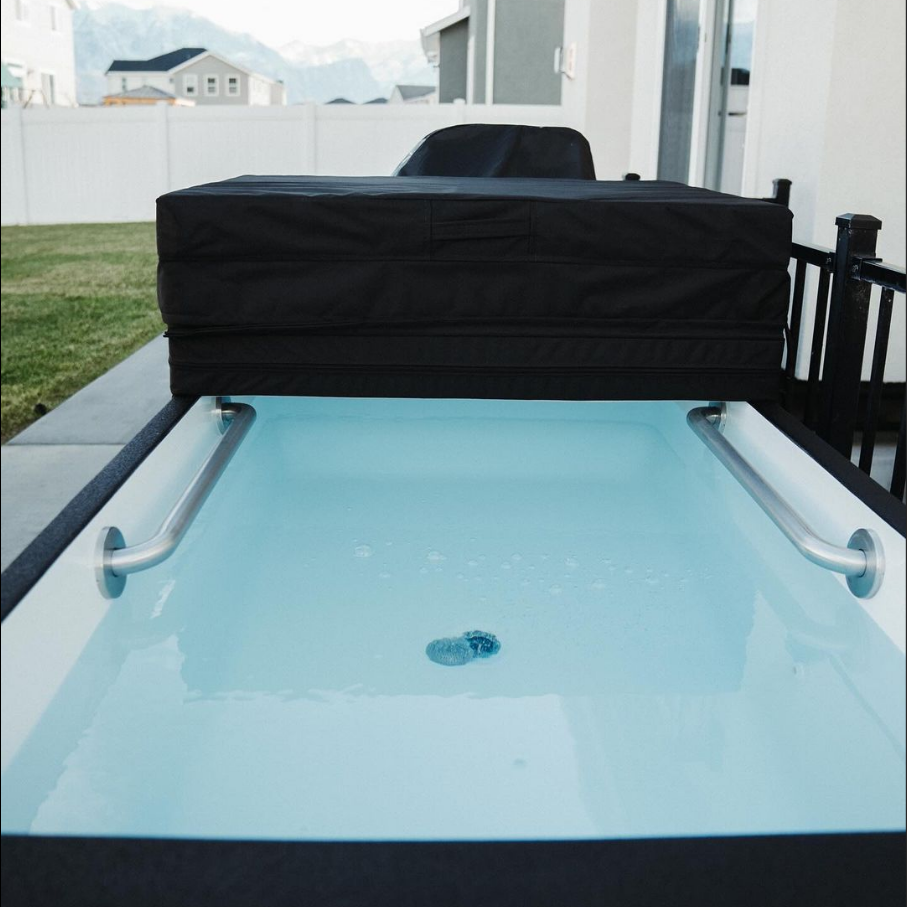
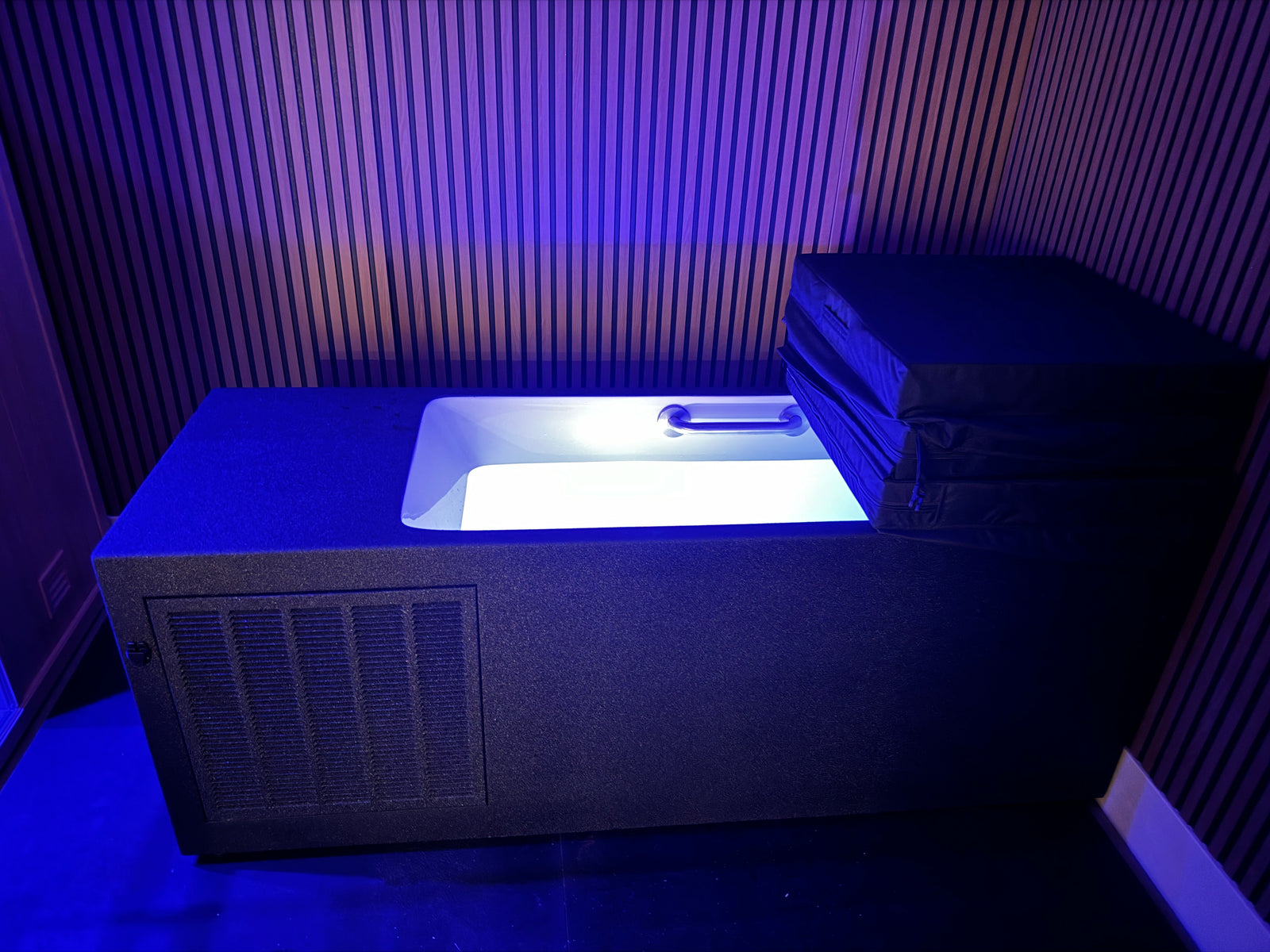
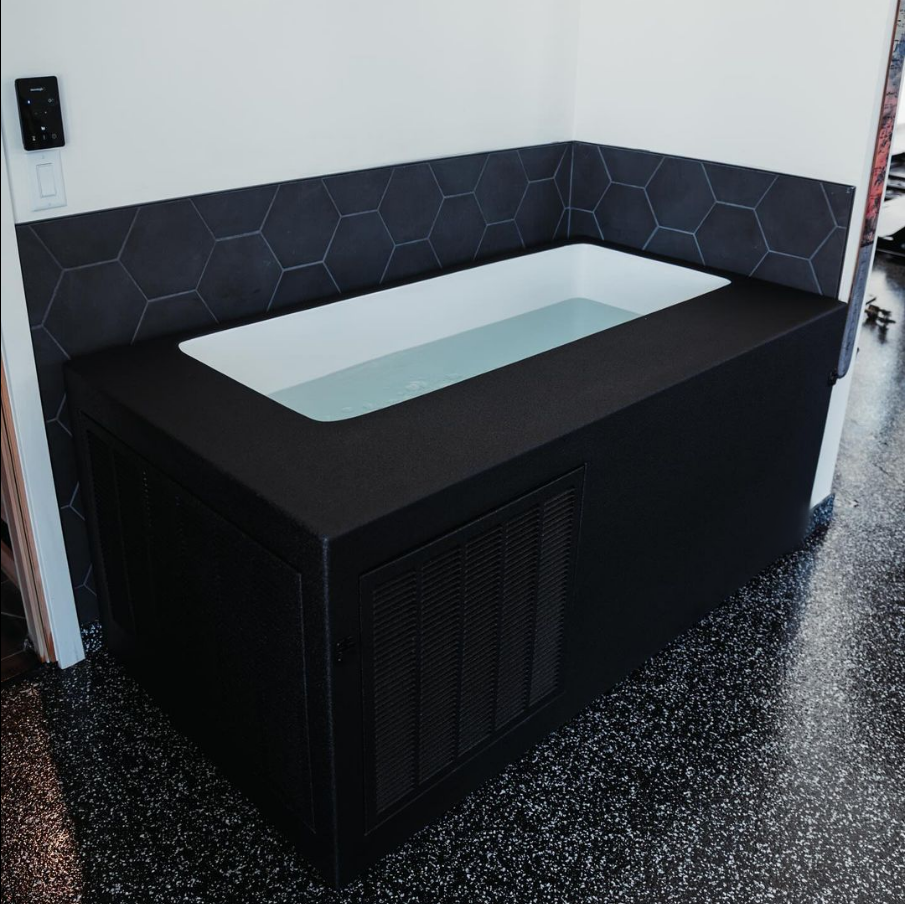

Easily Disable 5G on Your Phone for Health and Longevity (Android)
April 20, 2025 3 min read
Unfortunately, newer Android models like the Samsung S25 have removed easy access to disable 5G from the standard settings menu. But the method shown here circumvents that limitation and gives you full control of your device's network connection in a few free, easy steps.

Natural Remedies to Remove Neurospora Sitophila Mold from the Body
February 18, 2025 3 min read
Neurospora sitophila is a red/orange mold that can colonize the body, particularly the sinuses and brain, leading to chronic inflammation, neurological symptoms, and respiratory distress. Removing it requires a comprehensive natural approach that includes antifungal treatments, sinus cleansing, detoxification, immune support, and environmental control.

Brain Health as the Ultimate Success Multiplier, Part 5: How Successful People Can Proactively Safeguard Their Health
February 17, 2025 7 min read
Success isn't a product of willpower and ambition alone—it requires a strong foundation of physical and mental well-being. Yet, many high achievers only begin prioritizing their health after encountering burnout, cognitive decline, or unexplained fatigue. The good news? Health deterioration is often preventable, and brain function can be optimized with the right strategies.
- Description
- Considerations
- Shipping
- Money Back Guarantee
- FAQs
- Benefits
- Maintenance
- Cold Plunge FAQs
- Installation
- Financing
- Warranty
- White Glove Service
Chilly Dreams 110 - Standard Size
Our cold plunge is equipped with the ColdFlow Plunge System, expertly designed to deliver a superior cold immersion experience, promoting overall health and rejuvenation.
Dimensions: 30.5”H x 27.25”W x 80”L
Water Capacity: Up to 110 gallons (417 L)
Customization and Style
Elevate your space with our customizable color options. Tailor your Chilly Dreams cold plunge to seamlessly integrate with your décor, ensuring both functionality and visual appeal.
Product Options and Features
-
Self-Contained ColdFlow Tank: Elevate your wellness routine with our premium plunge tanks. Meticulously crafted with high-quality materials, each unit offers luxury and performance.
-
Plug & Play Design: Enjoy the industry’s simplest setup. The system plugs into a standard 110v household outlet and features an integrated garden hose fill and drain connection. Just set your desired temperature and let the automatic water chiller take care of the rest.
-
Custom Colors: Personalize your Chilly Dreams cold plunge to match your aesthetic preferences. Choose from a range of vibrant or subtle hues to complement your space, ensuring your plunge system enhances both functionality and style. Custom colors are an additional $700 and are finished with Sherwin-Williams automotive paint.

Experience Ultimate Rejuvenation with Chilly Dreams
The ColdFlow Plunge System is engineered for peak performance and comfort. By integrating cutting-edge cold plunge technology, it supports a healthy lifestyle through:
- Immune System Support: Regular cold exposure can strengthen your body's defenses.
- Increased Metabolism: Stimulate metabolic activity for improved energy levels.
- Enhanced Sleep Quality: Experience better sleep through effective temperature regulation.
-
Boosted Energy and Mood: Cold plunges can elevate your mood and invigorate your day.
Ensure your cold plunge system's seamless integration and optimal operation by adhering to these guidelines. For more information or assistance, please consult with our expert team. Photos may be shown with optional or unavailable features for marketing purposes only. If you have questions about standard equipment and options, feel free to contact us.
This product is designed for self-installation and does not require professional installation to maintain its warranty. Please note that professional installation services are not included in the freight price.
Documentation:
Chiller Specs for RejuvenTech Chilly Dreams Cold Plunge PDF
Chiller Manual for RejuvenTech Chilly Dreams Cold Plunge PDF
To ensure optimal performance and safety of your Chilly Dreams cold plunge, please consider the following key factors:
-
Child Safety and Insulation:
- Standard Lid: Comes with a 2-inch thick lid for superior insulation and enhanced child safety.
- Foldable Lid Option: Available in a 1/2 inch thickness for scenarios with space constraints. Consult with our team to choose the appropriate lid based on your installation needs. Ensure that the faucet is positioned considering the chosen lid type for both convenience and safety.
-
Electrical Requirements:
- A dedicated 20-amp GFCI (Ground Fault Circuit Interrupter) plug is required. For added ease, consider integrating a holiday switch or a smart plug for simple on/off control.
-
Space Requirements:
- Components occupy approximately 2.5 feet in width, 2.5 feet in depth, and 2 feet in height. Ensure the installation area accommodates these dimensions comfortably.
-
Ventilation:
- Proper ventilation is crucial. Whether installed within a cabinet, bench, or decorative unit, ensure ample space for air intake and heat dissipation from the chiller unit.
-
Accessibility for Service:
- The installation should allow easy access to the top of the plunge system for maintenance and repairs.
- Delivery
- Your Chilly Dreams Cold Plunge will be delivered via freight to the curb at the address provided. We will provide you with tracking details, including the LTL forwarder name. They will be provided your phone number in case they need to call you for directions, gate entrance, availability, or special delivery instructions.
- Note that the Chilly Dreams Cold Plunge does not require us to send a crew for installation. Therefore, the freight cost is just that, the freight cost, including the crate, inner packaging, and handling.
-
Installation Options:
- Built-In Installation: Seamlessly integrates into your space with either an undermount or "drop-in" option. Ensure proper ventilation and accessibility for maintenance.
- Freestanding Tub Setup: Allows customization and aesthetic integration within a bench or cabinet. Proper ventilation and service access remain essential.
- Self-Contained Portable Unit (Plug n Play): Offers convenience with minimal setup. Simply place the unit, plug it into a dedicated power source, and enjoy the benefits of cold plunge therapy.
-
Shipping & White Glove Delivery Policy
We strive to ensure a seamless delivery experience for all orders, whether small parcels or large freight shipments. Below are the details regarding shipping timelines, freight coordination, and premium White Glove service options:
-
Processing & Lead Times – Most products ship within 7 business days, unless otherwise specified (e.g., custom-built items requiring additional lead time).
-
Shipping Methods & Timeframes:
- Small Parcel (UPS/FedEx): Typically arrives within 3-4 business days once shipped.
- Freight Shipments: Delivery times vary based on the product, destination, and carrier availability.
-
Tracking & Delivery Coordination:
- Tracking information is provided for all shipments.
- Standard freight deliveries are curbside only—customers are responsible for arranging transport from the curb to the final location.
- For freight deliveries, we will contact you beforehand to confirm that you or an authorized representative will be present during the estimated delivery timeframe.
-
White Glove Service & Installation:
- For select high-end products requiring professional installation, White Glove service is included in the shipping cost.
- Our expert team will deliver, install, and fully set up your equipment, ensuring proper functionality and providing a full product walkthrough.
- White Glove service varies depending on the product—please refer to individual product pages for details.
If you have any questions regarding shipping, freight coordination, or White Glove service, please contact our office for assistance.
-
We are committed to your satisfaction and proudly offer a 30-day money back guarantee.
FREE AND EASY RETURNS
- We accept returns within 30 days of delivery.
- We pay return shipping.
- No restocking fee.
CONDITIONS
- Product(s) must be in the condition in which they arrived and not be altered in any way.
- All returned items must be in the original packaging.
- We kindly ask that you provide your order number and reason for the return (to improve our customer service).
You will be provided a shipping label and packing slip within three (3) business days.
Approved refund will be issued within three (3) business days of arrival to allow time for inspection.
Exception is for returns of products explicitly listed as FINAL SALE. No fine print. You will know if it is a final sale product when you make the purchase.
Do the products come pre-assembled or require assembly?
- Some require assembly, it just depends. This should be clear in the product description and attached manuals. If you have any questions, feel free to contact us.
- You can check the bottom of the description page to see if this is one of those products that invludes professional install.
- If professional installation is required, this will be provided through us.
- We do all we can to provide a turnkey service.
- Note: Any installation cost is "built in" to the shipping cost.
- All equipment comes with user manuals and technical support. Exception are products which, for obvious reasons, require neither, such as face creams and supplements.
Can these products be used both indoors and outdoors?
Generally-speaking, yes, most of them can, with some exception. Use your own best judgment, as we cannot be held liable for damage incurred by the end user.
Massage chairs, cryotherapy and hyperbaric oxygen chambers should be placed indoors to prevent unwanted wear.
Cold plunges require a wet room. Basically, you need a drain, or at least something to drain the water in to.
Some products, such as saunas and cryotherapy chambers, may require venting.
Are replacement parts available and how can I get them?
Replacement parts are available through us or the manufacturer. All of our new products come with warranties which include replacement parts.
What happens if I have a technical issue or need support?
Call us. We’re here to help!
Why Buy From Us?
Exclusive Selection
At RejuvenTech, we curate a premier assortment of high-end fitness equipment, ensuring that you have access to the latest and most sophisticated products on the market.
Fixed Shipping Rate
Enjoy the convenience of prompt shipping across the continental USA without the burden of additional costs – transparency at its best.
Quick Ship-out Time
Your item usually ships out within 2 business days of order confirmation.
Hassle-Free Returns
Your confidence is paramount – benefit from our 30-Day Easy Returns policy if your purchase doesn't meet your expectations, with a full refund guaranteed.
Customer Service Excellence
First Class Customer Service isn't just a phrase; it's our ethos. We pride ourselves on providing an unparalleled customer experience.
Authorized Retailer
Shop with confidence, ensuring you receive genuine products, full manufacturer warranties, and unparalleled support.
Commitment to Satisfaction
We are confident in the quality of our handpicked selection. However, should an issue arise, rest assured that we are dedicated to rectifying it to ensure your complete satisfaction.
- Relief from muscle soreness: Shown to alleviates muscle soreness and aid in workout recovery.
- Inflammation reduction: May reduce inflammation, which can be beneficial for overall health and recovery.
- Immunity boost: Can improve immunity and boost the body’s natural defenses.
- Cardiovascular health: Can improve blood flow, reduce heart rate, and enhance overall cardiovascular health.
- Improved circulation: May improve circulation, thanks to the constriction of blood vessels, which can aid in recovery and overall well-being.
- Mental health benefits: Has been linked to treating depression and improving mood, potentially boosting levels of dopamine and endorphins.
- Recovery and sleep: Can improve sleep quality and aid in recovery after exercise.
- Fat-burning: Cold exposure, including cold plunging, can increase fat-burning and improve metabolic health.
- General well-being: Many individuals report improved overall well-being and mental clarity after incorporating cold plunging into their routine.
For more information on the benefits of cold plunges and ice baths, check out our blog.
*These statements have not been evaluated by the FDA. These products are not intended to diagnose, treat, cure, or prevent any disease. Just like with diet or exercise programs, you should check with your physician before using cold or cryo therapy.
Maintaining a cold plunge is essential to ensure its longevity, hygiene, and safety for users. Here’s a detailed guide on the maintenance required for cold plunges:
1. Regular Cleaning
- Water Quality Maintenance: The water in a cold plunge should be kept clean and clear. This involves regular filtration, chemical balancing (such as with chlorine or bromine), and water testing. Water should be tested frequently—ideally daily—for pH, chlorine/bromine levels, and overall cleanliness to ensure it remains safe for users.
- Draining and Refilling: Depending on usage, it may be necessary to drain and refill the plunge pool periodically. High-use facilities may need to do this more frequently, perhaps every 1-2 weeks, while lower-use units may require it less often. This prevents the buildup of contaminants that cannot be filtered out.
- Surface Cleaning: The surfaces of the plunge pool should be scrubbed and disinfected regularly to prevent the buildup of biofilm, algae, or other residues. Use a non-abrasive cleaner to avoid damaging the material of the pool.
- Skimming: Regularly skim the surface of the water to remove any debris, such as leaves or insects, that may have fallen into the pool.
2. Filtration System Maintenance
- Filter Cleaning/Replacement: The filter system plays a crucial role in maintaining water quality. Filters should be checked regularly and cleaned according to the manufacturer’s instructions. Depending on the type of filter, it may need to be replaced every few months.
- Pump Maintenance: Ensure the water pump is functioning correctly. This includes checking for proper flow rates and inspecting for any leaks or unusual noises. The pump should be serviced periodically to maintain optimal performance.
3. Temperature Control
- Chiller Maintenance: Cold plunges typically use a chiller to maintain low water temperatures. The chiller should be inspected regularly to ensure it’s operating efficiently. This includes checking refrigerant levels, inspecting electrical connections, and ensuring the coils are clean.
- Thermostat Calibration: Periodically check the thermostat to ensure the water is being cooled to the correct temperature. Calibration may be required if the temperature readings seem inaccurate.
4. Electrical System Checks
- Inspect Electrical Components: Ensure that all electrical components, including the chiller, pump, and control systems, are functioning properly. Look for any signs of wear, corrosion, or damage to electrical connections and have them repaired by a professional if necessary.
- Ground Fault Circuit Interrupter (GFCI) Testing: The cold plunge should be equipped with a GFCI for safety. Test this regularly to ensure it is working correctly, as it protects against electrical shock.
5. Structural Integrity
- Check for Leaks: Regularly inspect the plunge pool for any signs of leaks, which can occur in the plumbing, seals, or the structure of the pool itself. Address any leaks promptly to prevent damage and water waste.
- Inspect Seals and Joints: Ensure that all seals and joints around the pool are intact and watertight. Over time, seals may wear out and need replacement.
6. Sanitization and Disinfection
- Regular Disinfection: In addition to maintaining chemical balance, it’s important to regularly disinfect the plunge pool to prevent the growth of harmful bacteria. This may involve shocking the water with a higher concentration of chlorine or using a dedicated sanitizing solution.
- UV or Ozone Systems: If the cold plunge is equipped with a UV or ozone sanitization system, ensure these are functioning properly. These systems help reduce the need for chemical sanitizers by killing bacteria and other pathogens.
7. User Guidelines and Hygiene
- Encourage Proper Hygiene: Encourage users to shower before entering the cold plunge to minimize the introduction of sweat, oils, and other contaminants. Providing clear guidelines on pre-use hygiene can significantly reduce the maintenance burden.
- Limit Usage per Session: Establish guidelines for how many people can use the cold plunge at one time and how long they should stay in. This helps prevent overuse and excessive contamination.
8. Seasonal Maintenance
- Winterization: If the cold plunge is outdoors and located in a region with freezing temperatures, winterizing may be necessary. This involves draining the pool and properly storing the equipment to prevent freeze damage.
- Spring Startup: After winter, thoroughly inspect all components, clean the pool, and replace or service any parts as needed before refilling and using the cold plunge.
9. Professional Inspections
- Annual Inspections: Consider having a professional perform an annual inspection of the cold plunge, especially if it’s heavily used in a commercial setting. This can help identify and address any potential issues before they become major problems.
Regular and thorough maintenance of a cold plunge not only ensures a safe and enjoyable experience for users but also extends the life of the equipment, making it a worthwhile investment for any facility.
What are the benefits of cold plunging?
Cold plunging offers a variety of benefits, both physical and mental. Physically, it can reduce inflammation, improve circulation, enhance recovery after exercise, and boost the immune system. Cold exposure stimulates the vagus nerve, which helps to reduce stress and improve overall mood. Many people also report increased energy levels and improved mental clarity after regular cold plunging sessions.
How long should I stay in a cold plunge?
The optimal duration for a cold plunge varies depending on your experience and tolerance. For beginners, it’s recommended to start with shorter durations, such as 1 to 2 minutes, and gradually increase the time as your body acclimates to the cold. More experienced users might stay in the cold plunge for 5 to 10 minutes. However, it's crucial to listen to your body and exit the plunge if you feel excessively cold, numb, or uncomfortable.
How cold should the water be for a cold plunge?
The typical temperature range for a cold plunge is between 50°F to 59°F (10°C to 15°C). This range is cold enough to elicit the therapeutic benefits without being too extreme for most users. Some advanced practitioners may opt for even colder temperatures, but it’s important to ensure the water is not so cold that it causes shock or injury.
How often should I do cold plunges?
The frequency of cold plunges depends on individual goals and tolerance. Many people find benefits with cold plunging 2 to 3 times per week, while others may incorporate it into their daily routine. As with any wellness practice, consistency is key, but it's also important to allow the body time to recover between sessions, especially if you're new to cold exposure.
Is cold plunging safe for everyone?
While cold plunging can be safe for most people, it’s not recommended for individuals with certain medical conditions, such as heart problems, high blood pressure, or circulatory issues. Pregnant women and those with severe cold sensitivity should also consult a healthcare provider before trying cold plunging. It’s always advisable to start with short, less intense sessions and gradually build up as your body adapts.
What should I do before and after a cold plunge?
Before a cold plunge, it’s a good idea to warm up the body with light exercise or stretching to get your blood flowing. After exiting the plunge, gently warm up with a towel or blanket, and consider doing some light movement or a warm shower to gradually bring your body temperature back to normal. Avoid immediately jumping into hot water, as this can cause a rapid change in body temperature that might be uncomfortable or unsafe.
Can cold plunging help with muscle recovery?
Yes, cold plunging is widely used by athletes for muscle recovery. The cold temperature helps to reduce inflammation and muscle soreness by constricting blood vessels and decreasing metabolic activity, which can alleviate pain and speed up the recovery process. It's particularly effective after intense workouts or competitions.
What are the mental benefits of cold plunging?
Cold plunging can have significant mental health benefits. The exposure to cold water triggers a release of endorphins and other neurotransmitters that enhance mood and reduce stress. Regular cold plunging can also improve resilience and mental toughness by helping individuals learn to stay calm and focused in uncomfortable situations. Many people report feeling more energized, clear-headed, and emotionally balanced after incorporating cold plunges into their routine.
What are the benefits of offering cold plunges at a spa or gym?
Cold plunges can significantly enhance the service offerings at spas and gyms by providing clients with a unique wellness experience. The benefits include improved muscle recovery, reduced inflammation, enhanced circulation, and increased energy levels. For spas, cold plunges can complement other treatments like massages or saunas, creating a holistic wellness routine. For gyms, they are particularly appealing to athletes and fitness enthusiasts looking for effective recovery methods.
How much space is required to install a cold plunge at a facility?
The space required for a cold plunge installation depends on the size and model of the plunge pool. Typically, a standard cold plunge pool might require an area of about 6’ x 6’, with additional space needed around it for safe entry and exit. Smaller, portable units might require less space, while custom-built or larger commercial models could need more room. It’s also important to consider the plumbing and drainage requirements when planning the installation.
What is the cost of installing and maintaining a cold plunge?
The cost of installing a cold plunge can vary widely depending on the size, model, and whether it’s a portable or built-in unit. Installation costs typically range from $5,000 to $20,000 or more, with higher-end commercial units at the upper end of the scale. Maintenance costs include regular cleaning, water treatment, and ensuring the mechanical components like chillers and filters are functioning properly. Maintenance is generally straightforward, but it’s essential to budget for ongoing upkeep to keep the plunge in optimal condition.
How do I market cold plunges to my clients?
Marketing cold plunges effectively involves educating clients on the numerous health benefits they offer, such as faster muscle recovery, improved circulation, and stress relief. Highlight these benefits in promotional materials, social media campaigns, and during client consultations. Offering introductory sessions, bundled packages with other treatments, or memberships that include cold plunge access can also attract clients. Testimonials and positive reviews from existing clients who have experienced the benefits can be powerful tools to draw in new users.
What are the safety considerations for offering cold plunges in a spa or gym?
Safety is paramount when offering cold plunges. It’s important to have clear guidelines for clients on how to use the plunge safely, including recommended time limits and temperature ranges. Staff should be trained to monitor clients for signs of discomfort or adverse reactions, and there should be clear procedures for dealing with emergencies. Additionally, ensure that the plunge area is equipped with non-slip surfaces, handrails, and proper signage to prevent accidents. Regular maintenance checks are also crucial to ensure the equipment is functioning safely and the water quality is maintained.
What is the difference between a cold plunge and an ice bath?
The main difference between a cold plunge and an ice bath lies in their setup, temperature, and typical use. Here's a breakdown of the key distinctions:
1. Setup and Equipment
-
Cold Plunge: A cold plunge typically refers to a specially designed pool or tub filled with cold water that is kept at a consistent low temperature using a built-in cooling system. Cold plunge pools are often found in spas, gyms, and wellness centers, and they are designed for repeated use with little maintenance. The water in a cold plunge is generally circulated and filtered, maintaining cleanliness and temperature consistency.
-
Ice Bath: An ice bath is usually a temporary setup where a tub, bath, or container is filled with water and then cooled by adding ice. The temperature of an ice bath is controlled by the amount of ice added, and it can fluctuate as the ice melts. Ice baths are often prepared on an ad-hoc basis, particularly for athletic recovery, and do not typically have a built-in system to maintain the temperature over time.
2. Temperature
-
Cold Plunge: The water temperature in a cold plunge is typically maintained between 50°F to 59°F (10°C to 15°C). The cooling system ensures that the temperature remains stable throughout the duration of the plunge, providing a consistent experience.
-
Ice Bath: Ice baths can reach lower temperatures than cold plunges, often ranging from 32°F to 50°F (0°C to 10°C), depending on the amount of ice used. The temperature can vary during the session as the ice melts and the water warms up slightly.
3. Typical Use
-
Cold Plunge: Cold plunges are often used in a more controlled, spa-like environment and are designed for repeated use by multiple people throughout the day. They are popular for their health benefits, including reducing inflammation, improving circulation, and enhancing recovery after exercise. Cold plunges are also often part of a wellness routine, used in conjunction with saunas or steam rooms.
-
Ice Bath: Ice baths are more commonly used by athletes and fitness enthusiasts immediately after intense physical activity to reduce muscle soreness and inflammation. Because ice baths can be prepared quickly using available ice, they are convenient for short-term use but are less consistent in terms of temperature control compared to cold plunges.
4. Comfort and Accessibility
-
Cold Plunge: Due to the controlled environment and stable temperatures, cold plunges are generally more comfortable and easier to use regularly. The consistent temperature and cleanliness make them ideal for routine use in wellness settings.
-
Ice Bath: Ice baths can be more intense and less comfortable, especially for those who are not accustomed to extreme cold. The initial shock of entering an ice bath can be greater due to the lower temperatures, making it a more challenging but effective method for quick recovery.
In summary, while both cold plunges and ice baths offer similar benefits related to cold exposure therapy, cold plunges provide a more controlled, consistent, and often more comfortable experience, typically found in professional wellness settings. Ice baths, on the other hand, are more commonly used in athletic recovery scenarios and involve a more makeshift setup with potentially lower, more variable temperatures.
What is the difference between cold plunging and whole-body cryotherapy?
Cold plunging and whole-body cryotherapy are both methods of exposing the body to extreme cold for therapeutic benefits, but they differ significantly in their processes, temperatures, duration, and the mechanisms by which they provide benefits. Here’s a detailed comparison:
1. Process and Environment
-
Cold Plunging: Cold plunging involves immersing the body in cold water, typically in a specially designed plunge pool or tub. The water temperature is usually maintained between 50°F to 59°F (10°C to 15°C). The body is fully submerged, except for the head in some cases, and the cold water directly contacts the skin, cooling the body gradually.
-
Whole-Body Cryotherapy: Whole-body cryotherapy (WBC) involves standing in a cryotherapy chamber or cryosauna, where the body is exposed to extremely cold, dry air, typically cooled by liquid nitrogen or refrigerated cold air. The temperatures in these chambers can drop to between -200°F and -300°F (-129°C to -184°C). The exposure is brief, usually lasting 2 to 4 minutes, and the body is surrounded by the cold air rather than being immersed in a liquid.
2. Temperature
-
Cold Plunging: The water in a cold plunge is cold but not nearly as extreme as cryotherapy, typically maintained between 50°F to 59°F (10°C to 15°C). The cold water gradually lowers the body’s temperature, allowing for a controlled and steady cooling process.
-
Whole-Body Cryotherapy: Cryotherapy involves exposure to much colder temperatures, often as low as -200°F to -300°F (-129°C to -184°C). These extreme temperatures cause a rapid cooling of the skin’s surface without lowering the core body temperature significantly.
3. Duration
-
Cold Plunging: Sessions in a cold plunge usually last between 5 to 15 minutes, depending on the individual’s tolerance and experience level. The body is gradually cooled as it remains immersed in the water.
-
Whole-Body Cryotherapy: Due to the extreme cold, cryotherapy sessions are much shorter, typically lasting only 2 to 4 minutes. The brief exposure time is sufficient to trigger the desired physiological responses without causing harm.
4. Mechanism of Action
-
Cold Plunging: The cooling effect in cold plunging is due to the direct contact of cold water with the skin, which gradually lowers the body temperature, reducing inflammation, and promoting muscle recovery. The cold water constricts blood vessels, reduces swelling, and numbs nerve endings, which can help alleviate pain and soreness.
-
Whole-Body Cryotherapy: Cryotherapy works by rapidly cooling the skin’s surface temperature, which triggers a systemic response from the body. The extreme cold causes blood vessels to constrict and redirect blood to the core to protect vital organs. After leaving the chamber, the blood vessels dilate, and oxygenated, nutrient-rich blood flows back to the extremities, promoting healing and reducing inflammation.
5. Accessibility and Equipment
-
Cold Plunging: Cold plunging requires access to a cold plunge pool or tub, which can be set up in various locations, including homes, gyms, and spas. It is generally more accessible and can be done with minimal specialized equipment beyond the plunge pool.
-
Whole-Body Cryotherapy: Cryotherapy requires a specialized cryotherapy chamber or cryosauna, which are expensive and typically found in professional wellness centers, gyms, and specialized cryotherapy clinics. The equipment requires trained personnel to operate and maintain.
6. User Experience
-
Cold Plunging: The experience of cold plunging is gradual, with the body slowly adjusting to the cold water. It can be initially uncomfortable but is often described as refreshing and invigorating once the body acclimates. The immersion is often accompanied by a sense of calm as the body adapts to the cold.
-
Whole-Body Cryotherapy: The experience of cryotherapy is intense due to the extremely low temperatures, but it is brief. Users often describe it as exhilarating, and the short duration makes it more tolerable for those who might find prolonged cold exposure challenging.
7. Health Benefits
-
Cold Plunging: The benefits of cold plunging include reduced muscle soreness, decreased inflammation, improved circulation, enhanced recovery after exercise, and potential boosts in mental clarity and mood. It is particularly favored by athletes for recovery and by wellness enthusiasts for its invigorating effects.
-
Whole-Body Cryotherapy: Cryotherapy is known for its ability to reduce inflammation, speed up recovery times, improve circulation, boost metabolism, and provide relief from chronic pain and certain skin conditions. Some users also report enhanced mood and energy levels due to the release of endorphins triggered by the extreme cold.
In summary, while both cold plunging and whole-body cryotherapy offer similar benefits related to cold exposure, they differ significantly in terms of their process, temperature, duration, and user experience. Cold plunging provides a more gradual and prolonged cooling effect through water immersion, while cryotherapy offers a rapid, intense cold experience using extremely low temperatures in a controlled environment.
Can these be used both indoors and outdoors?
Generally-speaking, yes. Cold plunges require a wet room for indoor use. Basically, you need a drain, or at least something to drain the water in to.
How much space do I need to install the cold plunge?
The space required depends on the model you choose. Below are the standard dimensions for our Chilly Dreams cold plunge models:
- Standard Model: 28” W x 80” L
- Large & XL Models: 39” W x 85” L
Additionally, ensure the following for proper installation:
- A leveled surface for stability and optimal performance.
- Access to a power outlet for the chiller system.
- Sufficient space for easy access and maintenance if needed.
Can it be installed outdoors, or is it only for indoor use?
Chilly Dreams cold plunges are designed for both indoor and outdoor installations. However, for outdoor setups, we recommend:
- A shaded or partially covered area to minimize prolonged exposure to harsh sunlight and extreme weather.
- A stable, level foundation such as concrete, stone, or treated decking.
- Protective cover usage when not in use to extend the lifespan of materials.
What kind of maintenance does it require?
Cold plunges are relatively low-maintenance but require some care for optimal cleanliness and performance:
- Water changes: Recommended every 4-8 weeks, depending on usage.
- Filtration & ozone: The built-in filtration and ozone system helps keep the water clean, minimizing bacterial and algal growth.
- Sediment removal: Some natural sediment may accumulate at the bottom over time but can be easily cleaned.
- Basic wipe-down: Cleaning the interior surface periodically will maintain its pristine condition.
How is the water temperature regulated?
Chilly Dreams cold plunges come equipped with a Cold Flow chiller system, allowing for easy temperature adjustments.
- The system maintains a temperature as low as 35°F while allowing flexibility within a range based on personal preference.
- The chiller continuously regulates the water temperature when powered on, ensuring a consistent cold immersion experience.
How long does it take to cool the water?
Cooling time depends on factors like initial water temperature, ambient temperature, and plunge size.
- Assuming the water starts at room temperature (70°F), it generally takes:
- 5-8 hours to reach the mid-30s°F.
- Once the target temperature is reached, the chiller maintains the set temperature continuously, eliminating the need for frequent cooldowns.
How is the water kept clean?
Our Chilly Dreams cold plunges feature a multi-layered purification system for consistently clean water:
- Ozone purification: Kills bacteria and neutralizes contaminants.
- High-efficiency filtration: Captures debris and particles.
- Cold temperature: Naturally inhibits bacterial and algae growth.
- Periodic water changes (every 4-8 weeks) further maintain water quality.
Can the cold plunge be integrated into a deck or customized space?
Yes! Many clients customize their cold plunge installations to seamlessly blend with their space. Popular options include:
- Deck integrations: The plunge can be embedded into decking for a flush, built-in look.
- Custom surrounds: Stone, wood, or tile finishes can enhance aesthetics.
- Enclosure designs: Adding a pergola, privacy screen, or insulated covering for year-round use.
If you’re planning a custom installation, we can provide technical specifications and guidance for your builder or designer.
How long does it take to cool a cold plunge?
The time it takes to cool a cold plunge to the desired temperature depends on several factors, including the initial water temperature, the desired final temperature, the capacity of the plunge pool, and the efficiency of the chiller or cooling system being used. Here’s a general overview:
1. Initial Water Temperature
- Starting Temperature: If you are filling the cold plunge with tap water, the starting temperature might range from around 50°F to 70°F (10°C to 21°C) depending on your location and the season. Cooler starting temperatures will require less time to reach the desired cold plunge temperature.
2. Desired Final Temperature
- Target Temperature: Cold plunges typically aim for a water temperature between 50°F to 59°F (10°C to 15°C). The closer your starting temperature is to this range, the quicker the cooling process will be.
3. Capacity of the Plunge Pool
- Volume of Water: Larger plunge pools with more water will naturally take longer to cool compared to smaller ones. The volume of water significantly impacts the time needed to reach the desired temperature.
4. Efficiency of the Cooling System
- Chiller Capacity: The power and efficiency of the chiller or cooling system are critical factors. More powerful chillers can cool water more quickly. For instance, a high-capacity chiller can cool a small to medium-sized plunge pool by several degrees per hour.
- Ambient Temperature: The surrounding air temperature can also affect how quickly the water cools. In warmer environments, the chiller may need to work harder, potentially extending the cooling time.
5. Estimated Cooling Time
- General Estimate: For a typical cold plunge pool with a high-efficiency chiller, it may take anywhere from 4 to 8 hours to cool the water from an average tap temperature of around 70°F (21°C) down to 50°F (10°C). Larger plunge pools or those starting at higher temperatures may take longer.
6. Factors That Can Influence Cooling Time
- Circulation: Proper water circulation helps distribute the cold more evenly and can reduce cooling time.
- Insulation: Well-insulated plunge pools will retain cold temperatures better, reducing the workload on the chiller and potentially speeding up the initial cooling process.
- Cooling Process: Some systems allow for gradual cooling over a longer period, while others may have "quick chill" options that can cool the water faster but might consume more energy.
7. Maintenance and Temperature Holding
- Maintaining Temperature: Once the plunge pool has reached the desired temperature, the chiller will typically cycle on and off to maintain this temperature. Keeping the cover on when not in use can help maintain the temperature and reduce the need for frequent cooling cycles.
In summary, the time it takes to cool a cold plunge can range from several hours to most of the day, depending on the factors mentioned above. For a more precise estimate, it's best to consult the specifications of the chiller system and consider the specific conditions of your cold plunge setup.
Installation & Setup Options
We provide multiple installation support options to ensure you get the most out of your purchase, whether you prefer a DIY approach or require full-service professional installation.
1. Included Installation Resources:
- Detailed Instruction Manual – Step-by-step setup guide included with every product.
- Video Tutorials – Access our comprehensive library of setup and troubleshooting videos.
- Virtual Installation Walkthrough – Schedule a live video call with an expert to guide you through the setup process and answer any questions.
2. White Glove Installation Service (Optional Upgrade):
For customers who prefer a hassle-free, professional installation, we offer a White Glove Service for select products. This includes:
- On-site delivery & professional installation by our expert team.
- Complete product setup, calibration, and functionality testing.
- Full operational walkthrough to ensure you understand how to use and maintain your equipment.
- Debris removal & cleanup so you can enjoy your new product immediately.
White Glove Service availability and pricing vary by product and location—contact us for details or to schedule your installation.
FINANCE YOUR REJUVENATION JOURNEY
Invest in your health and wellness with ease. RejuvenTech offers a range of financing options to suit your needs, whether for personal or business use.
Explore your options and bring cutting-edge wellness technology into your life or business today.
Comprehensive Warranty for RejuvenTech Chilly Dreams Cold Plunge Units
RejuvenTech cold plunge tubs are backed by a 60-month warranty on the tub and a 12-month warranty on electronics and accessories from the original date of purchase, covering manufacturing defects. This warranty applies to personal and household use, provided the product is installed and maintained according to the recommended guidelines, and the defect is not the result of unauthorized or improper use.
The warranty excludes damages incurred during shipping (covered by freight insurance) and issues caused by misuse or improper handling. This warranty is non-transferable and limited to the repair or replacement of defective components without charge. Shipping costs are not included.
To file a claim, RejuvenTech must be notified within 10 days of discovering a defect. The claim should include a detailed description of the issue along with customer information, such as name, address, and installation date.
White Glove Service – Ultimate Convenience & Professional Installation
Experience a seamless, stress-free setup with our White Glove Service, designed to handle every detail of your Chilly Dreams Cold Plunge installation. Our expert team ensures a flawless setup so you can focus on what matters—your recovery and wellness.
What’s Included:
-
Pre-Installation Consultation – We assess your space, electrical needs, and setup requirements to ensure a smooth installation.
-
Delivery & Placement – Your cold plunge is carefully transported, unboxed, and positioned exactly where you want it.
-
Professional Installation – We handle the full setup, including plumbing and electrical connections, ensuring everything functions perfectly.
-
System Calibration & Testing – We fine-tune the settings, fill the plunge, and verify optimal performance.
-
Personalized Walkthrough – A guided demonstration on how to use and maintain your cold plunge for long-term performance.
-
Cleanup & Debris Removal – We leave your space pristine, removing all packaging and installation materials.
Optional Add-Ons:
-
Additional accessories setup (Bluetooth speakers, LED lighting, grab bars, antifreeze heater)
-
Ongoing maintenance service packages
Pricing:
White Glove Service for a Chilly Dreams cold plunge in the United States is $2,400, with potential additional charges based on location, travel, and complexity of installation.
Let us handle the heavy lifting—so you can dive straight into the benefits of cold therapy. Contact us today to schedule your White Glove installation.































